THE SENTINEL
THE STUDENT MAGAZINE OF HAMMOND SCHOOL
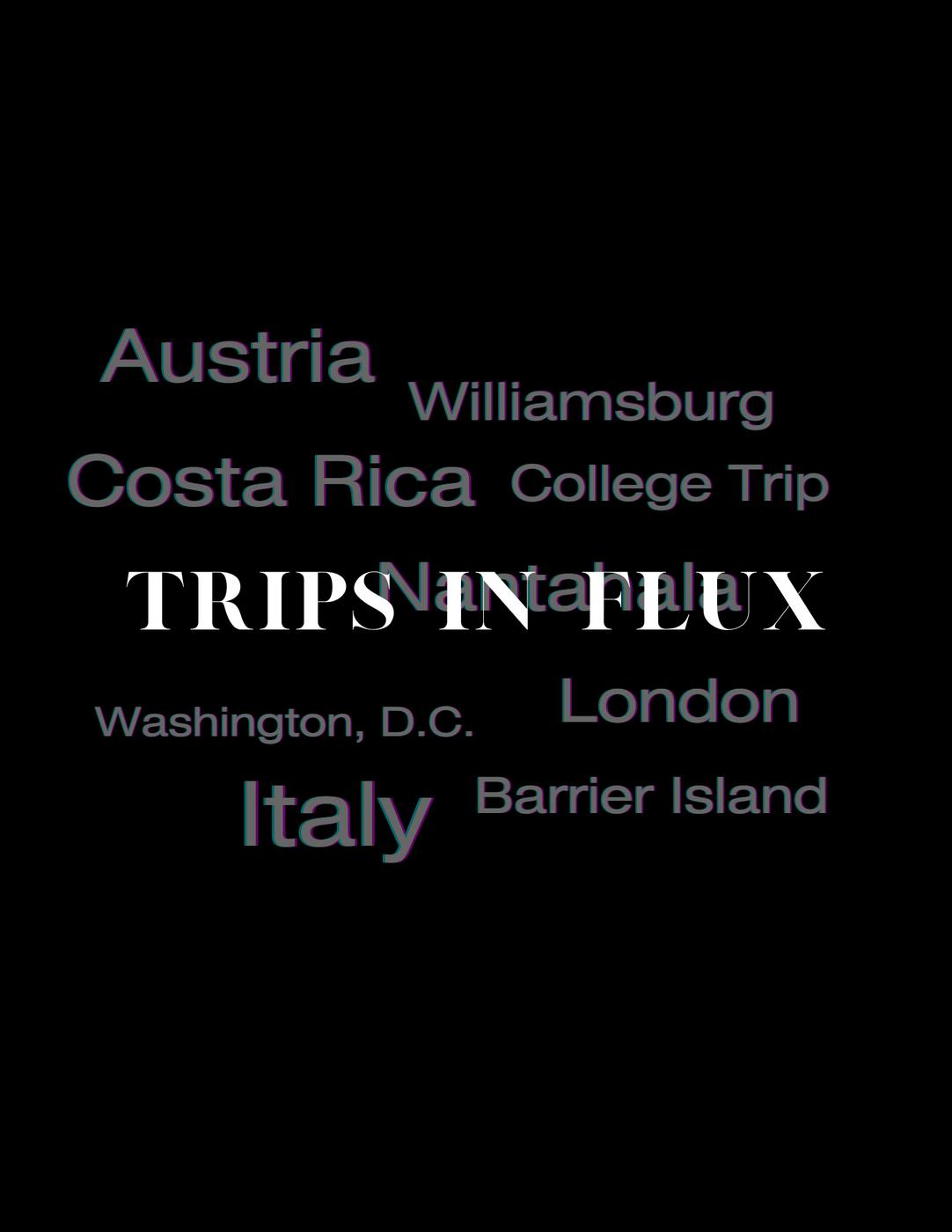
WINTER 2024 EDITION IV
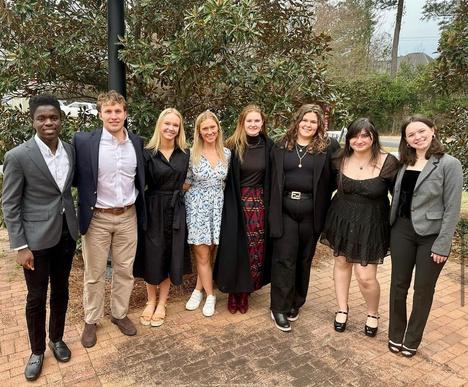
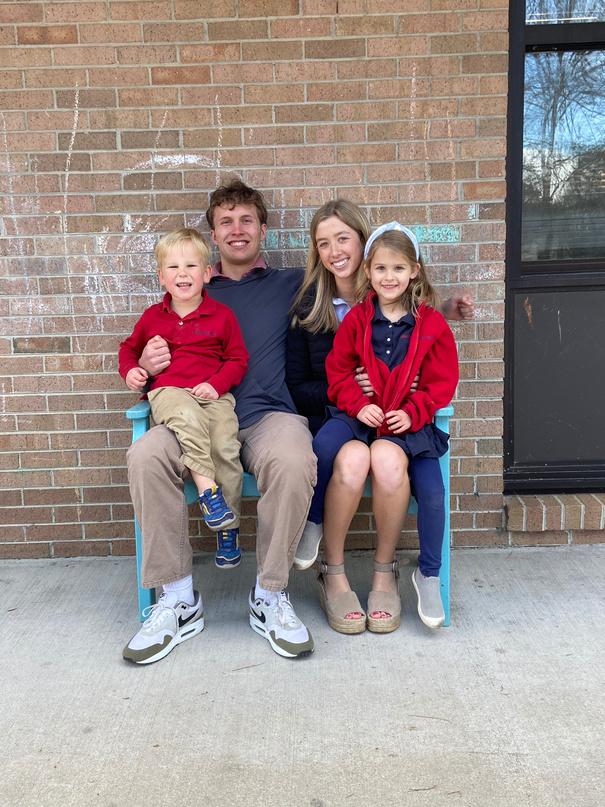
The Future of Physics Requirements at Hammond
Lower School Science Night Moves to the Innovation C
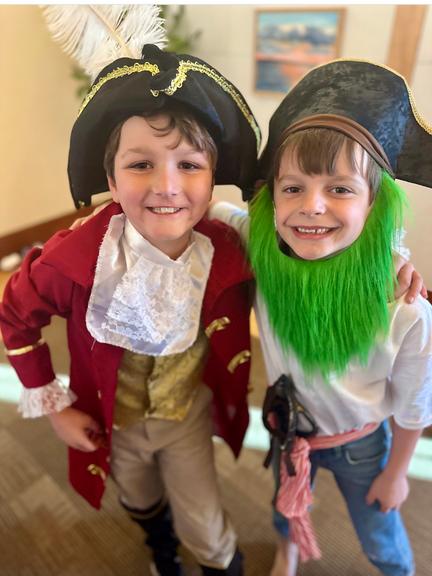
Trips In Flux: Student Travel at Hammond Since COVID-19
Let Her Bake: Banana Bread
Hammond Partners With All Good Books
100 Wins for Luke Martin
A Freshman in College Math: Spotlight on Miguel Shim
Upper School Art Students Aid In Citywide Project
Hearing Student Voices: Changes Come for Honor Council Elections
Dance Moms Pyramid: Faculty Fashion Edition
Clubs Collaborate to Support Causes
Design Club Works On Go-Kart
Looking Back on 20 Years of Select Ensemble
Jackson Muschamp ‘20 Secures Orange Bowl
Restaurant Review: MOA Korean BBQ
on Samira Khalil
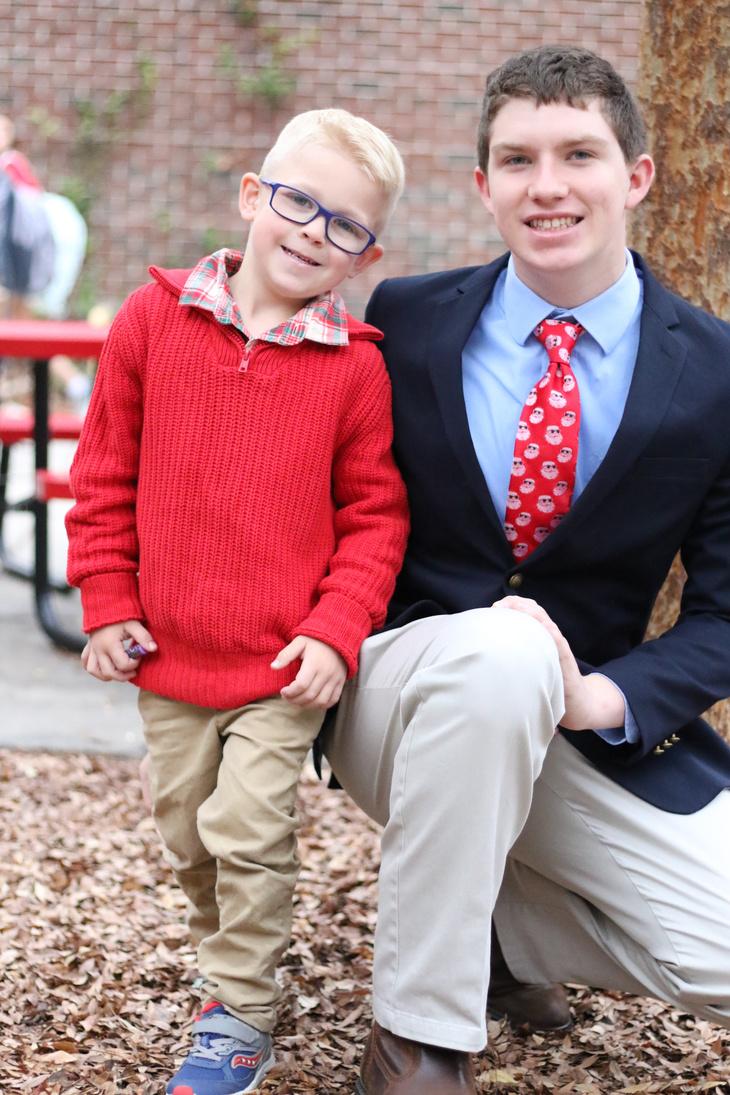
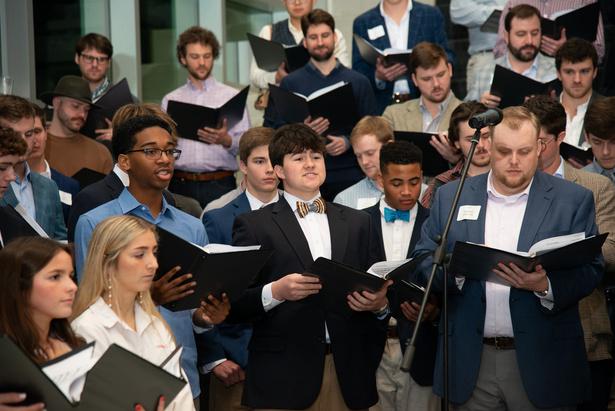
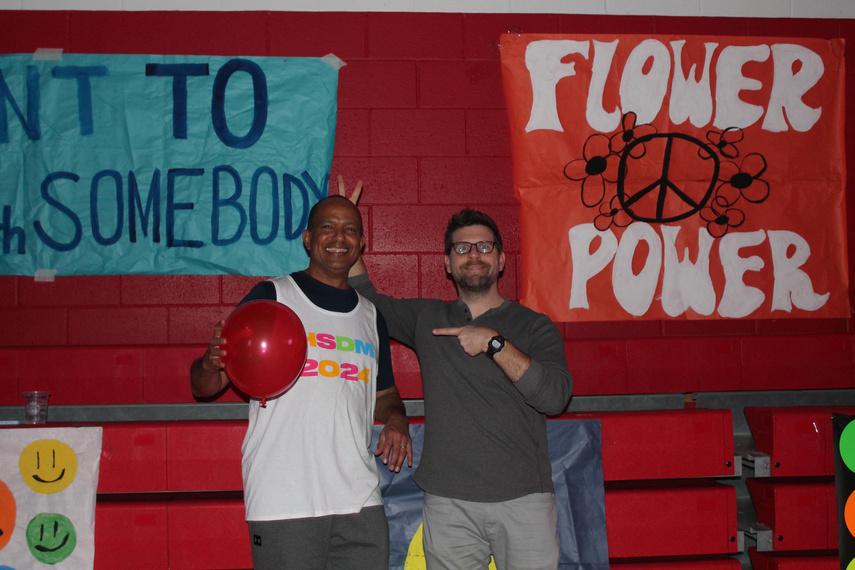
To the Next Level: Spotlight
More Than A Textbook: Faculty Publishing Books Back in the Training Room: Spotlight on Brianca Beckford ‘19 Seniors Celebrate Early Decision Acceptances TABLE OF CONTENTS 4 5 6 10 11 12 13 14 17 18 20 21 24 25 26 28 29
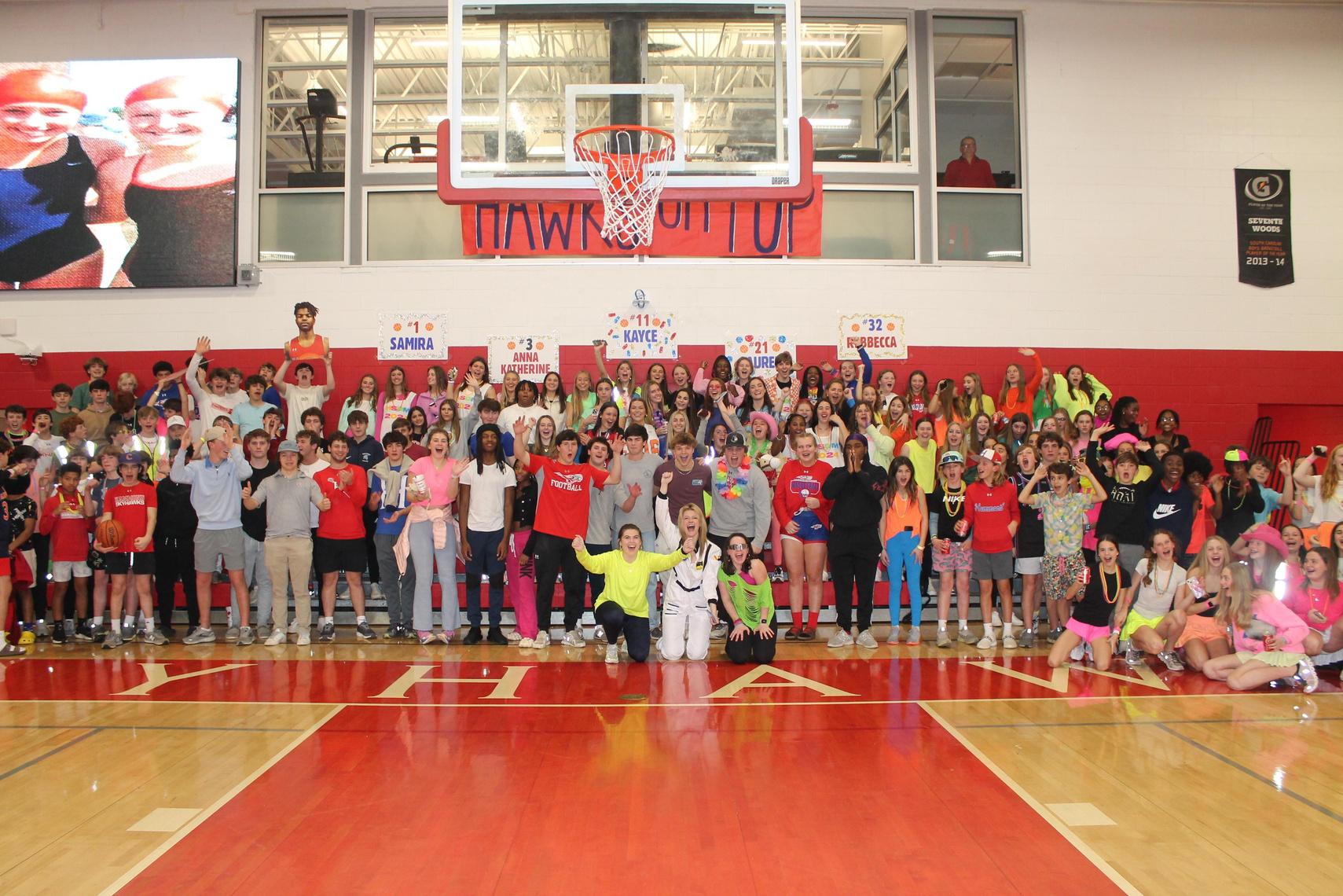
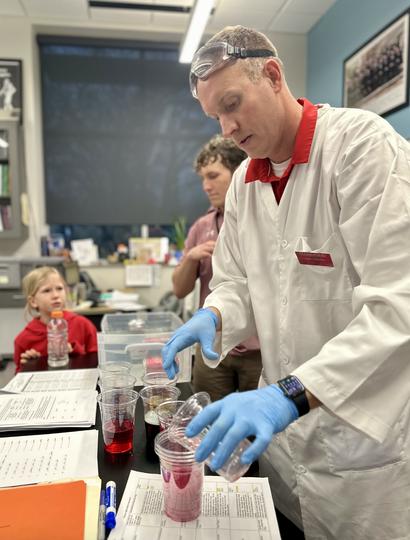

WINTER 2024
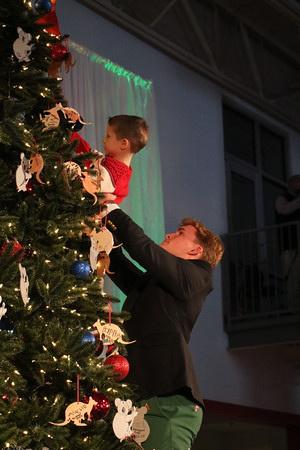
the future of physics requirements at hammond
by Natalie Engh
Throughout their years at the upper school, students gain increased authority over their course loads, but how much is too much? As physics teacher Matt Henderson shares, teachers worry that students close their minds to new classes. Mr. Henderson, who teaches physics at the upper school, says, “Sometimes it looks like gatekeeping. Sometimes it looks like we're taking decisions out of your hands, but it's because we know our stuff, right?... We desperately want, again, the best possible collage of stuff to show you, to equip you before you leave.” Henderson shares that teachers do not want to take their class for their own benefit; they desire to expand students’ knowledge on subjects that will best equip them for the future.

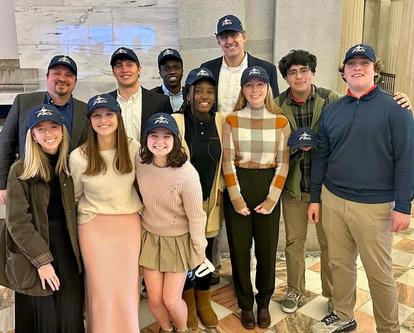
Students are still required to take biology freshman year and chemistry sophomore year. Even though some students do not want to go into scientific fields, these sciences are widely accepted as important to a liberal education. Physics shares that importance, as it is made up of equations that cover natural phenomena: motion, forces, gravity, the mechanics of the universe. Henderson states, “These equations reflect something about nature. They're not just things that work in classrooms. They come out of the world.”
The science department and college counseling emphasize that the AP Biology/Chemistry substitution for the physics requirement remains valid for now. An explicit physics requirement in the future is simply a conversation, and it is not yet set in stone.
T H E S E N T I N E L / 4
ABOVE: A Lockheed Martin employee shows senior Lily Balfour how to fly an F-16 during the AP Physics class’ field trip to the State House BELOW: The class with teacher Matt Henderson and upper school head Jody Lumpkin at the trip Photo credit to Hammond School (Instagram, @hammondschool)
A sheet of equations for the AP Physics exam
RETRACTION: A previous version of this article stated that a physics requirement had been re-instituted for the class of 2025. This is false; the article has been modified to reflect that.
Lower School Science
Night Moves to the Innovation Center
by Drew McCall
Ever since the event’s inception in January of 2019, Lower School Science Night has been an amazing way to “encourage students and parents to engage more with science through easy experiences, investigations, and demonstrations that could be done at school or home,” in the words of lower school head Helen Kiser. The event also aims to connect lower school families with resources and facilities like the IC, Wonder Lab, and Maker Space, coupling community building with science, engineering, and design activities tailored to lower school families.
In our interview prior to the event, Ms. Kiser continued, “I am super excited for our LS families, most of whom have never been inside the IC, to get to experience the SciDome, meet and work with upper school students, and go inside those classrooms.” The hour-long event saw over 100 lower school families participating. Families got to experience building and dropping parachutes, building paper airplanes, building bridges out of marshmallows and toothpicks, air cannons, experiencing animals with Mr. Rice, building bouncy balls, knot tying, and a series of demonstrations with Mr. Lutterbie in the chemistry lab. “I really feel like we had something to offer everyone,” added Mr. Lutterbie.
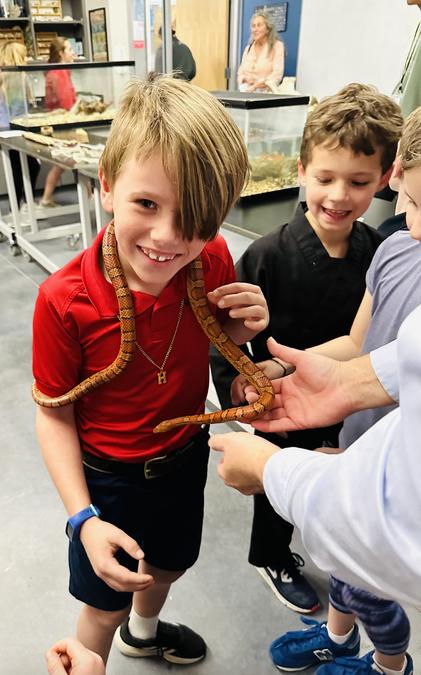
The upper school student-led paper airplane station was especially successful, as a huge number of lower school students followed templates or built paper airplanes on their own and flew them across the IC Nest. Other upper school students led demonstrations and other science stations, too; “every event we offered was a success,” according to Mr. Lutterbie. Kindergarten student Thomas Ruff commented at the event, “You can also see fossils like I did. You can make parachutes and you can feel about your heart ” Junior Zamam Lone added that he was “in charge of the SciDome and loved seeing kids be fascinated by the videos playing.” Several stations were run exclusively by upper school students, letting the upper school students see “many kids be in awe of the science going on around them.” Kindergartener Jack Render recalled, “On science night, there was a big ball of smoke where there was a garbage can… it made smoke balls… it was awesome.” Some of the stations even taught lower school students skills they will keep with them, like the knot-tying station. “Helping out was so much fun...we taught kids anything between slipknots and tying their own shoes,” junior Peden Brabham said.
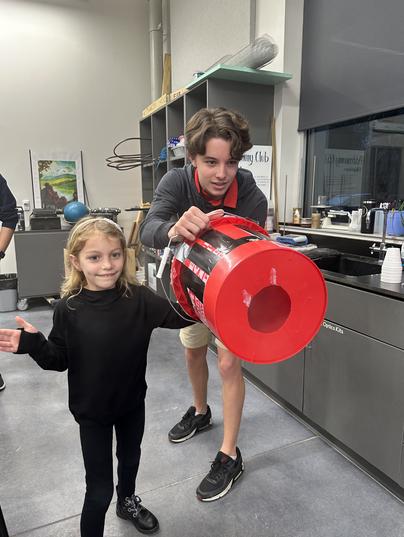
Following the event, Mr. Lutterbie commented that he hopes “this event can continue and grow in the future. We used almost every room in the IC, but we can and will grow to use the hallways and outside spaces, I’m sure of it.” Ms. Kiser, who envisioned the event alongside Lutterbie and assistant lower school head Elizabeth Webb, also commented, “I am hopeful that Science Night now has a life of its own and will grow to inspire everyone to love science, engineering, design, exploring, and community building.”
T H E S E N T I N E L / 5
LEFT: Second grader Hollis Arnold with a snake around his neck during Mr Rice’s activity RIGHT: Junior Coe Glenn guides first grader Abigal Barnes in an actvity in Mr Hendersons room Photo credit to Hammond School (Instagram, @hammondschool)
Trips in Flux
Student travel at Hammond since COVID-19
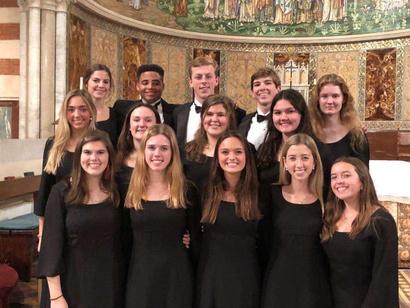

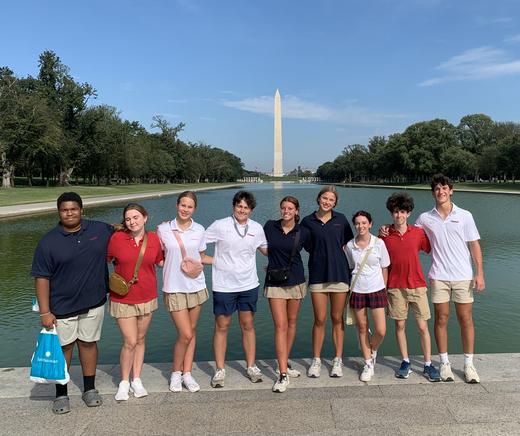

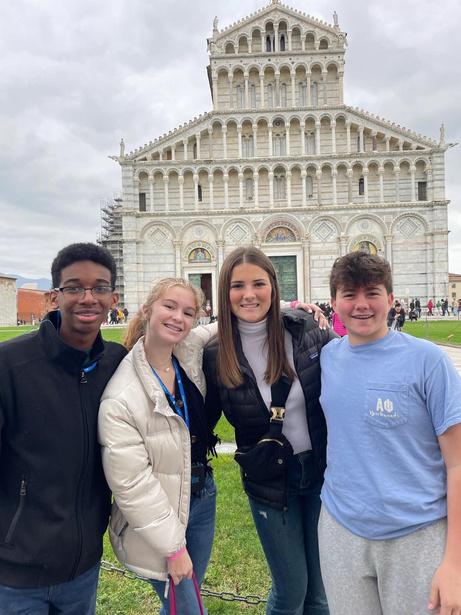

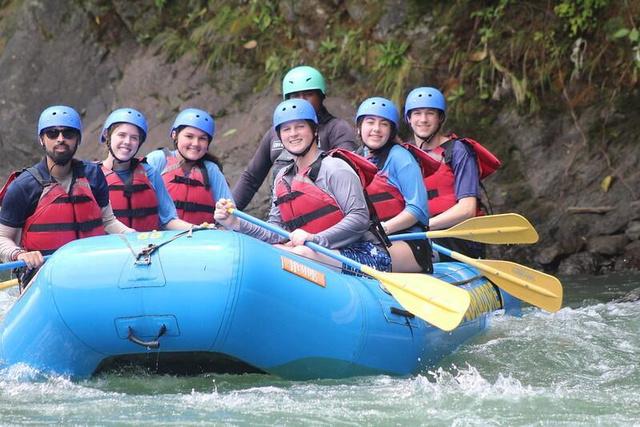

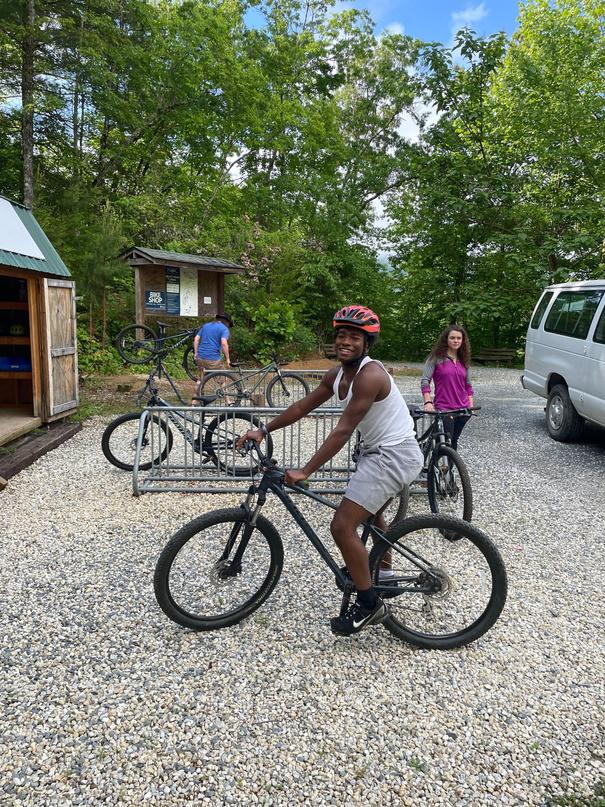
 by Ali Dorrington
by Ali Dorrington
Hammond is known for offering a wide range of experiential trips to its students, both domestically and abroad However, due to the COVID-19 pandemic, opportunities for travel were limited for some time, affecting four school years in total. As of this school year, all trips have resumed, and every class has been given the chance to experience trips that they initially missed out on Owing to the belief that experiential learning opportunities are vital for the overall development of students, Hammond provides diverse experiential programs in places as varied as Barrier Island, the Nantahala Outdoor Center, Washington, D.C., Costa Rica, and most recently, England through the newest summer abroad program.



These trips are overseen by Steven Hillard, head of student activities and experiential education, whose usual work – and initial plans for an expanded travel program – were complicated by COVID-19. The first installment in the renewed Hammond Abroad is sponsored by upper school English teacher George Simpson and upper school physics teacher Matt Henderson, who are “excited to explore the learning opportunities it will offer their students, with the added feature of a summer trip abroad.”

According to Mr. Hillard, prior to the pandemic, Hammond had plans to “do global travel based on individual interest; unlike the class level trips that take the entire grade, these experiences abroad would be for smaller groups of students with similar interests, whether it was culturally exploring South Africa or gastronomic education in Italy.” This program was heavily anticipated, but all its offerings for the summer of 2020 were cancelled due to COVID-19, alongside all Hammond trips for the 2020-21 school year, except for the senior trip in May 2021.
T H E S E N T I N E L / 7
UPPER LEFT: 2023 seniors pose together at their senior trip at the Nantahala Outdoor Center UPPER RIGHT: Jonathan Okereke poses in front of Lincoln Memorial on the 2023 sophomore trip to D C LOWER: Current freshmen (then eighth graders) at the World War II Memorial in Washington, D.C. Photo credit to Hammond School
Current senior May Malanuk rappelling while on the 2023 junior trip to Costa Rica
The junior trip to Costa Rica is a highly anticipated trip for Hammond students; because of COVID, both the classes of 2021 and 2022 were unable to travel during their junior year. During the next 2021-22 school year, Mr. Hillard emerged with the idea to take both the then-senior class of 2022 and then-junior class of 2023 to Costa Rica. He says, “It was an exciting challenge and the current head of school, Mr. North, said, ‘Let’s see what you can do.’” Despite testing and vaccination restrictions, Hillard and other faculty worked so that 131 students and faculty could embark on the trip.
Hillard now seeks to revamp the former sophomore college trip, which was moved to become a twoday experience during junior year, as well as the former senior trip, which must be reworked because of changes in SCISA athletic scheduling. These changes offer more opportunities for personalization and faculty involvement Moving forward, Hillard is gathering the “feedback of our faculty to build a trip based on...fill in the blank. Is it a history-based trip? Is it a science-based trip? Is it a culturally based trip?”
With the opportunity to revisit these traditional trips, Hillard sees this as” an unintentional benefit” from COVID, “that we get to revisit, revise, brainstorm, and come up with...what I hope will be an awesome opportunity.” To Hillard and other faculty Hammond’s philosophy on school trips comprises more than a chance to explore a new destination: it provides students with individualized experiences that contribute to their personal growth and leave indelible imprints on their character.
“It was an exciting challenge...and the current head of school, Mr. North, said, ‘Let’s see what you can do.’”
Mr. Hillard on planning the combined Costa Rica trip in 2022
Furthermore, with the 2023-24 school year, Hillard has finally reintroduced Hammond’s “Beyond the Books” abroad program, now with a greater academic component. This new iteration is heavily backed by head of school Andy North, whose experience at his previous school gave him “the knowledge of how you take an academic elective course, marry it to the experiential education model, and the outcome...an abroad course for high school students.”
Hammond’s first summer program in England invites students to “delve into the literary and artistic treasures of the Romantic period” and explore the relationship between technology and learning. Mr. Henderson emphasized that students will explore “emerging industry and the conflict with conservative notions of purity and that romantic ideal of a person turned loose in the world.”
Mr. Simpson made clear that, for this course, exploring the historical and personal context of writers from this age is just as important as diving into their actual work, since “poetry is their [poets’] way of figuring out the world and processing it...so they can put it down in a metaphor on paper.” Artists of the Romantic Age were trying to preserve what was left of an old order in an era of major technological change. During that time, Mr. Henderson emphasizes, “material progress” didn’t always imply “human progress.” He states, “All that industrialization came with a cost that these writers were able to see...life in the cities became more brutish.”
T H E S E N T I N E L / 8
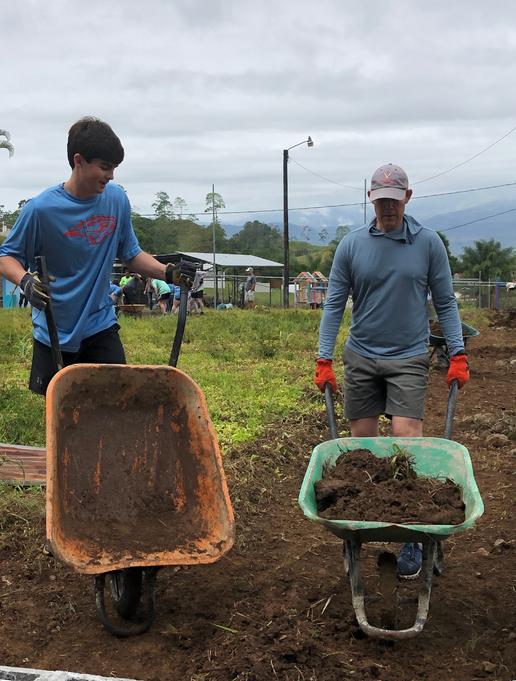
Furthermore, without England’s technological growth, the country would not have expanded its imperial horizons. The abroad program’s name is “The Sun Never Sets,” a phrase from the time period signifying the vast extent of the British Empire during the 19th and early 20th centuries; at any given moment, there was always a part of the empire where the sun was shining
As Mr. Simpson puts it, “England, at that point became the center of the universe… The industry helped them build the height of their empire.” England’s romantic legacy thus extends beyond the realms of literature and art; students will also dive into the landscape of England, from the busy streets of London to the English countryside, which was changed immensely by Romantic-era development. Mr. Henderson is especially excited for this element of the trip, saying that “there’s a connection through objects and through places, and through material experiences, and it makes the history...and the science more real.”
All students traveling on the England trip chose to go; students were required to apply and explain their interest in going. Mr. Simpson says on this, “Your education is your own and...we want to share it [this trip] with a group of kids who seem to be enthusiastic.” About future trips, Simpson and Henderson hope to “broaden the scope a little bit as we go, and if the trip is successful, maybe a couple more next year.”
Hillard emphasizes that planning the first summer of Hammond Abroad involved “such an awesome submission process from faculty,” with administrators choosing only one of six proposed trips. Hillard hopes to “grow this to a couple opportunities” in different locations around the world representing different subject areas
As Hammond reignites the flames of exploration, faculty and administration will continue to deliberate over creating trips that enrich students’ understanding of the world and their place in its history. Hillard concludes, asking, “Who knows what kind of incredible experiential academic electives could be offered for our kids?”
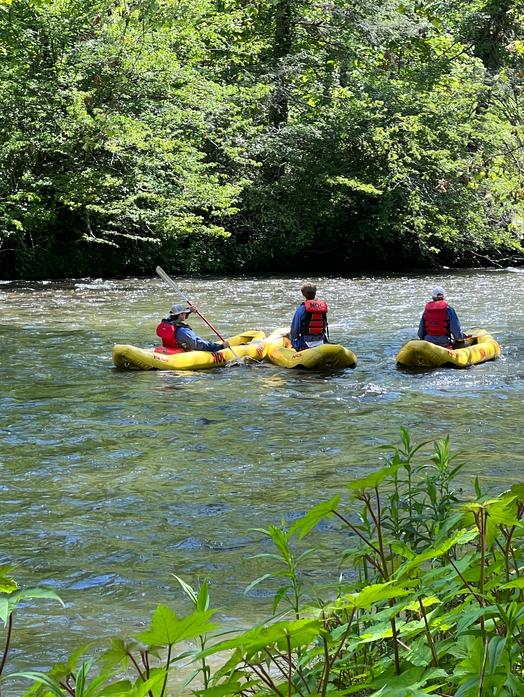
T H E S E N T I N E L / 9
Current senior William Hudson and head of school Andy North working on a service project while in Tres Equis, Costa Rica Photo credit to Hammond School
Current juniors “duckeying” down the Nantahala River during their 2021 freshman trip Photo credit to Hammond School
Let her Bake
by Ali Dorrington
Are you up late studying? Procrastinating and too tired to focus on your work? I’ve got a recipe for you. There are many ways to make banana bread, but the most effective are the most straightforward recipes. Although I cannot guarantee this bread will get you a good grade on that test you’re studying for, I can guarantee it will be delicious.
Ingredients Instructions
2-3 over-ripe bananas, mashed 1/3 cup melted butter
1 teaspoon baking soda 1/2 teaspoon baking powder pinch of salt
3/4 cup sugar
1 large egg, beaten
1 teaspoon vanilla extract
1 1/2 cups all-purpose flour
1 teaspoon ground cinnamon (optional) 1/3 cup chocolate chips
1. Preheat your oven to 350 degrees and grease a 9x5 inch loaf pan.
2. In a mixing bowl, mash the bananas with a fork until smooth.
3. Stir in the melted butter into the mashed bananas.
4. Mix in the baking soda, baking powder, and salt.
5. Stir in the sugar, beaten egg, and vanilla extract.
6. Mix in the flour and cinnamon until thoroughly combined. Be careful not to over-mix.

7. Fold in the chocolate chips.
8. Pour the batter into the prepared loaf pan.
9. Bake in the oven for 50-60 minutes. Check if fully baked by inserting a toothpick and ensuring it comes out clean.
10. Allow the banana bread to cool in the pan for 10 minutes, then transfer to a wire rack and cool completely before serving.
T H E S E N T I N E L / 1 0
A picture of banana bread Photo credit to Simply Recipes
Hammond Partners With All Good Books
by Alex Magargle
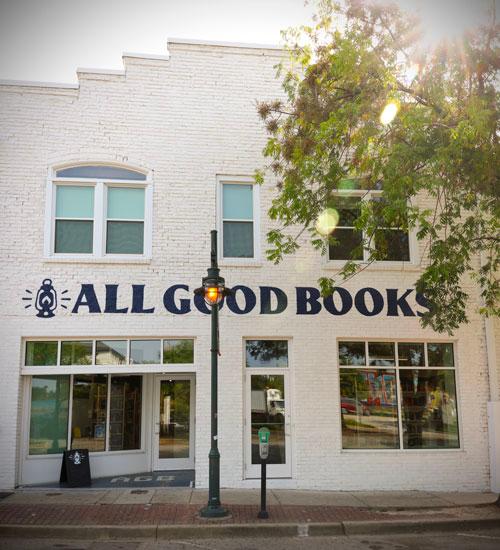
With the help of a Kickstarter campaign and an investment from a professor at USC’s law school, the team was able to use their skills and funds and open All Good Books in March of 2023.
Mr. McCormack ordering his books through the store, in his words, “snowballed into” the whole upper school using All Good Books as its go-to for buying books. Mr. McCormack cites upper school head Jody Lumpkin’s passion for all things literature as the reason for Hammond’s partnership with All Good Books, which will continue to grow in future years
All Good Books is a bookstore that also serves foods and beverages to its patrons in Five Points. The store is known for its variety of genres and also allows for orders of books not in their collection. Their emerging relationship with Hammond has made them an important supplier of books to Hammond’s upper school classes.
The story of All Good Books began with owner Ben Adams, who wanted there to be an independent bookstore in Columbia like the one at which he worked in Charleston. He started small, with a stand in Soda City selling books, hoping to generate enough money to open a brick-and-mortar store. Soon after, Ben successfully opened Odd Bird Books in the Arcade on Main Street. However, the following pandemic created many bumps along the road for him and other small business owners.
At this time, senior English teacher John McCormack began to support Odd Bird by ordering all the books for his classes through them. With a plan to become a large independent bookstore and hang-out spot, the Odd Bird team expanded from one to nine in order to achieve their dream. Soon enough, they found the space to open their store, the building that was formerly the Parthenon Restaurant in Five Points.
“He cites upper school head Jody Lumpkin’s passion for all things literature as the reason for Hammond’s partnership with All Good Books.”
T H E S E N T I N E L / 1 1
Mr McCormack on Hammond’s relationship with All Good Books
A picture of the All Good Books storefront Photo credit to the University of South Carolina
100 wins for luke martin
by Theodore Lumpkin
Junior Luke Martin has recently amassed his 100th win on the varsity wrestling team. This huge milestone has come after six years of dominating wrestling and does not include his wins from middle school. Luke, who wrestles at a weight of anywhere from 138-150 pounds, was recently SCISA player of the month and is also a nationally ranked water-skier who participates in many water-skiing meets
Luke’s wrestling skill is electrifying in person, especially during matches in the gym with the lights dimmed and a full student section Teammate Angesom Ladd describes wrestling him as simply “so bad” and that “you’ll never win against him ” Luke, who has been team captain for two years, continues to bring attention to wrestling, even in Hammond’s footballdominated environment Yet he always remains humble even while collecting numerous accolades.
When asked how he has accomplished such an outstanding wrestling career, which includes a state championship win, he emphasized that he had to work hard “over a long period of time,” showing that his consistent perseverance sets him apart from the crowd.
a freshman in college math: spotlight on miguel shim
by Natalie Engh
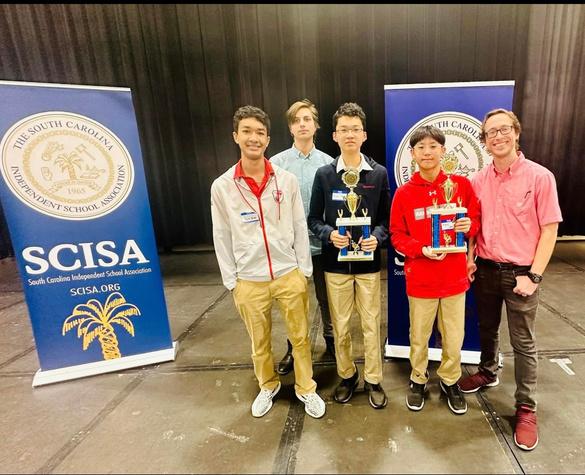
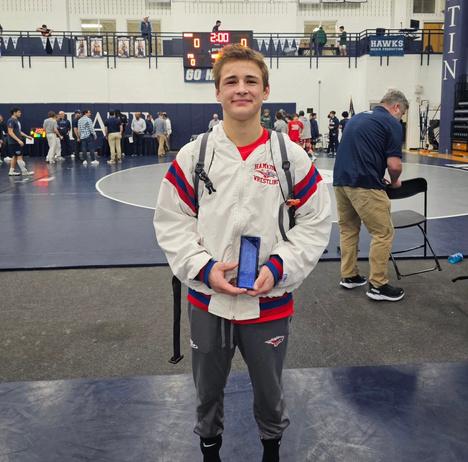
For Miguel, it all started in 5th grade. Janette Park, his mentor and a then-senior at Dutch Fork High School, inspired in Miguel a passion and interest to learn beyond his curriculum. He joined the math team at Chapin Middle School and decided to teach himself principles of algebra, geometry, counting, and number theory During the lockdown in 2020, Miguel describes, “all I did was math because it was so fun; each problem seemed like a logic puzzle.”
After transferring to Hammond this school year, Miguel has taken honors pre-calculus with Mr. Rybarczyk, who suggested Miguel take BC calculus this semester as well. Miguel admits he was very nervous, not only for the course load, but also for his new classmates: “I was afraid the 11th and 12th graders would not accept me ” However, after a few classes, he felt welcomed.
In the future, Miguel plans to take linear algebra and multivariable calculus with Mr. Rybarczyk and a university course his senior year. He also hopes to teach himself physics this summer.
T H E S E N T I N E L / 1 2
A photo of Shim with chess club teammates and coaches following their SCISA state championship Photo credts to Hammond School (Instagram, @hammondschool)
Martin holding his plaque following the Carolina Prep Duals at Charlotte Latin School in January Photo credt to Hammond Wresting (Instagram @hammond wrestling)
REDACTION: A previous verson of ths artice failed to note that Mguel did not attend Hammond until ths school year and claimed that Janette Park, a graduate of Dutch Fork Hgh Schoo, attended Hammond
Upper school art students aid in citywide project
by Lily Balfour
On Wednesday, October 11, 2023, Mayor Daniel Rickenmann announced a new public art program called Columbia Streams Art. In a press release detailing Mayor Rickenmann’s announcement of the program at Boyd Plaza, he says that, “The fabric of Columbia is vibrant with streams of creativity flowing from every direction,” and that “as more are choosing to live, work, and play in our community, we want to ensure there are new, exciting, and thoughtprovoking public art installations for all to enjoy and contribute to.” Taking full advantage of the polysemy of the word “stream,” the Columbia Streams Art program does not extend solely to the stream provided for local artists to create art and “invigorate our public spaces,” but also to reflect on an important aspect of Columbia’s culture: our rivers.
Following this announcement, Hammond’s upper school art department was contacted by Skot Garrick, Columbia’s strategic initiative coordinator, welcoming Hammond’s upper school art students to take part in the embellishment and decoration of a 74-inch-tall fiber glass sculpture of a river trout as a part of the Columbia Streams Art program. The river trout sculpture, previously unveiled in the colors of Columbia’s flag at Mayor Rickenmann’s announcement, arrived at Hammond as a blank canvas, completely primed with white paint. From there, Ms. Chumley’s Intermediate and Advanced 3D art classes took the lead. They collaboratively discussed design ideas, writing down concepts on the whiteboard, before coming to an agreement on a design that pays homage to our rivers as well as rainbow trout, a fish found often in Columbia waters.
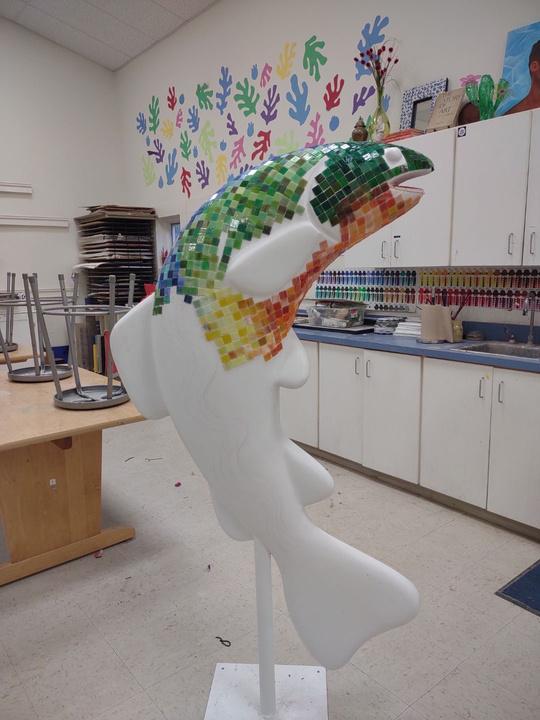
The students of these classes, as well as occasional helpers from other classes, are placing a rainbow gradient of pre-cut, stained glass mosaic tiles on the sculpture, even using glass cutting materials to trim the ¾ inch by ¾ inch tiles to fit on the more organic curves of the shape. After mapping out the gradient in pencil, students glue on tiles, using e6000 super glue held on with tape to prevent gravity from dragging the tiles down. Once dry, the tape is removed, leaving behind the glimmering stained glass. A line of blue tiles, representing the Broad and Saluda Rivers, filtering up on both sides of the sculpture’s caudal peduncle converges above its dorsal fin and runs along the sculpture’s spine in order to represent the Broad and Saluda Rivers’ convergence into the Congaree. The work necessary to position each intricate tile is evident in the sculpture’s organic flow, as the design creates a twinkling rainbow array that glimmers depending on where the light hits the tiles.
Hammond students can visit the art building and place tiles during free periods in order to help Ms. Chumley and her classes finishthe sculpture It will be displayed at the Upper School art exhibit on Friday, March 15th, which can be observed before the opening show of Beauty and the Beast.
T H E S E N T I N E L / 1 3
The sculpture in progress Photo credit to Lily Bafour
hearing student voices: changes come for honor council elections
by Shindara Olatosi
The Honor Council has been an important part of Hammond since the Council’s inception by a student committee in the 1990’s. History teacher Greg Franke became the faculty advisor two years ago after the previous advisor, Paul Ragan, retired. In Mr. Franke’s second year advising the student-run council, he has presided over significant changes to the selection process for the Honor Council.

AtHammond,emphasisonhonor,integrity, andcharacterextendstoallaspectsof studentlife.NoviolationoftheHonor Code...isconsideredtobetoosmalltobe ignored.
1) Each student has the right to keep the proceedings and results of any honor council action private within Hammond School However, cases which result in suspensions, both in-school and outof-school, must be reported on college applications both by the student and by the College Counseling office
2) Each student has the right to have a faculty advisor of his/her choice present at hearings Students accused of Honor Council violations are strongly encouraged, though not required, to bring their academic advisor or another faculty member into the meeting to support them from the Hammond School Honor Code
The Council involves students who serve a calendar year term (rather than a school year).
The council consists of 3 students from the junior class, 2 students from the sophomore class, and 2 students from the freshman class. This year, the Council welcomed one member per grade based on popular vote. At least one member from the three grades of the Honor Council was elected by their peers; the remaining members were elected by the upper school faculty. This new process followed a visit from students at Washington & Lee University involved in their Owings Fellows program. During this visit, the Fellows consulted with Hammond students about the state of the honor code at Hammond, after which they submitted a report recommending more student involvement in the honor council selection process.
T H E S E N T I N E L / 1 4
fromtheHammondSchoolHonorCode
Student representatives from Washington & Lee University and their advisor, who visited Hammond last school year Photo credit to Hammond School (Instagram, @hammondschool)
Indeed, allowing students to elect one member was a change made so that the student body could feel more engaged with the council. The student engagement with the council has been “very strong” this year, as seen with the level of participation in the selection process. Each grade level had over 10% of students nominated for council positions. Increased student engagement in the Honor Council’s process has allowed student trust in the Council to increase as well.
Sullivan Epps, a sophomore who has been on the honor council for two years, says, “The job of the honor council is to hold everyone accountable and [for students to] advocate for their peers. Sometimes, it is easier for a student to understand a problem from their student perspective rather than a teacher.” In his view, the Council is very proud of its responsibility and they are very serious about protecting the students that they hear cases against.

The council members are given a few days' notice that they need to hear a case. Since the council “sees confidentiality as important,” charges remain anonymous to prevent bias. Furthermore, the case is never brought up publicly after it has been discussed in session.
3) Each student has the right to know the charges brought against him/her before being called before the Council.
4) Each student has the right to appeal the verdict of the Upper School Head to the Head of School.
5) Each student has the right to be warned that lying to the Council is a violation of the Code from the Hammond School Honor Code
To make sure “the council members are judging the cases with honesty and integrity,” they do not judge any cases in which a friend is on trial in order to prevent potential bias between friends.
“Sometimes, it is easier for a student to understand a problem from their student perspective rather than a teacher.”
T H E S E N T I N E L / 1 5
Sullivan Epps, a sophomore on the Honor Council
The 2022 council members together during spirit week Photo credit to the 2022-23 yearbook staff.
In Sullivan’s experience as a member of the honor council, he believes that the student body respects the honor council; even though the students “joke about the council at times, the council brings Hammond together as a community so that everyone can be advocates for one another.”
That mutual advocacy “strengthens the community.” In his view, students “believe it's a good system to properly judge other students” and that “it brings a sense of community” because of the personal connection between peers that the Council fosters.
Elections for membership to the Honor Council will be held at the beginning of the second semester of the school year. The students elected will hold their seats through the first semester of the following school year.
Candidates for election to the Honor Council will nominate themselves before the Upper School student body and faculty. After hearing from nominated students, the student body will elect one member of honor council per grade...After the first representative from each grade is selected, the faculty vote to select a second representative from each grade and a third representative from the junior class.
from the Hammond School Honor Code
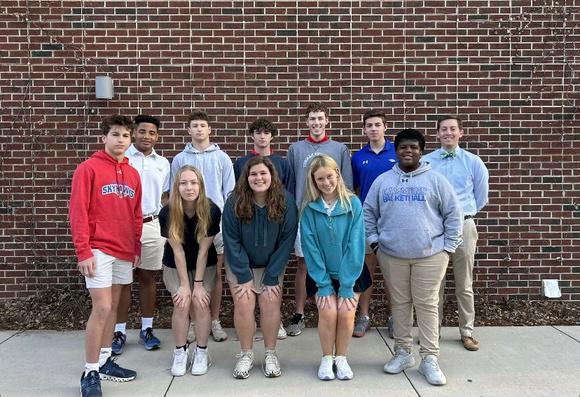
The Honor Council has been an essential part of Hammond for decades, and it remains an important student-run program. With student engagement increasing alongside the council’s focus on integrity and confidentiality, students and faculty see its relationship with Hammond students as positive and getting better, bringing the Hammond community closer together over a shared bond of trust and respect.
T H E S E N T I N E L / 1 6
The 2022 and 2023 honor councils together for a picture Photo credit to Hammond’s 2022-23 yearbook staff
Dance MomS Pyramid: Faculty Fashion Edition
by Preston Swarat
In hopes of not beating a dead horse, I’d like to present the readers of the Sentinel with another Dance Mom’s style pyramid This edition’s ranking carefully scrutinizes the fashion choices and motifs taken by six teachers Though serious and professional individuals, these teachers’ fashionable whimsy – excepting The Suits – provide the student body with a sense of constancy but also fresh personality, which allows them to function as inspiring symbols of individuality.
Starting with the bottom, we have what I like to call, The Suits This trio is comprised of Mr Henderson, Mr Simpson – a new addition – and Dr Million The trend of wearing a suit jacket began with Dr. Million, though Mr. Henderson joined the faculty later and likely began wearing one independent of our resident trend setter. Normally I would applaud the bravery of an outlier, but it has since become a trio, and I don’t believe that the choice comes from a place of whimsy but rather a stiff, mothball professionalism. It does look nice, though, and my opinion is really down to personal choice
Number five is Mr. Rice for his belt buckles. Congratulations on moving up from number six! I personally love the belt buckles and the spirit with which he wears them It’s pure individuality – no one else would be caught dead in them That being said, I would love to see more outfit coordination with the belts, where administration permits it, of course. After all, I’m a known supporter of adhering to the dress code.
Rounding out the bottom is Mr. McCormack for his black trench coat. I’m a huge fan of long sweeping trench coats. If I could, I’d wear them all the time! However, I’d be at risk of overheating and coming off as a suspicious person. As much as I love Mr. McCormack’s trench coat and its ephemeral nature, it can be difficult to get around in the hallways in it, and I think the intimidation factor scares the freshmen But maybe that’s a bonus
Moving on to the second row of the pyramid we have Mrs. Jackson. As a sympathetic long skirt girlie, I love her outfits – they’re professional but add a nice touch of whimsy through accessorizing and color patterning. A special shout out goes to her scarves, specifically the school bus yellow one, for their relevance, and that they make her look like a chic mob wife.
Finalizing the second row and in much the same way is Dr Dillard for her suitably French long skirts and dainty sweaters paired over camisoles Variation in this format comes through an excellent understanding of color matching and switching out the skirts for pants. Dr. Dillard doesn’t play too much outside this format, but her ranking is attributed to the identifiable, quality nature of her style; why change what so aptly suits her job?
On the top of the pyramid is the most whimsical of all, however unintentional: Mr. Franke and his Bowtie. I capitalize Bowtie because it’s just so iconic. It’s Hammond’s version of the Anna Wintour Bob, though with less of an intimidation factor. The Bowtie works so well because it makes sense for him – it calls to the Andy from The Office, George Russell quality about him –while still playing outside himself It’s a choice, which is what fashion should be.
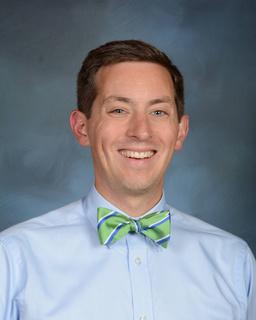

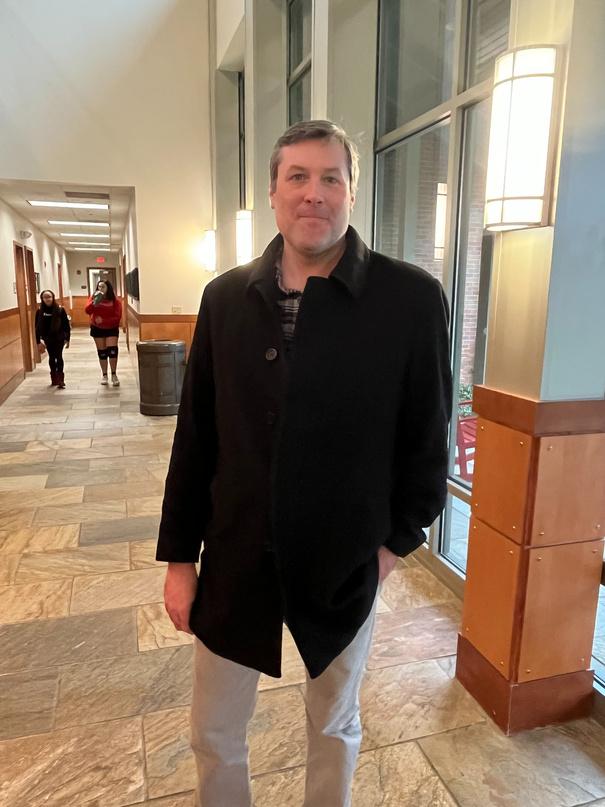
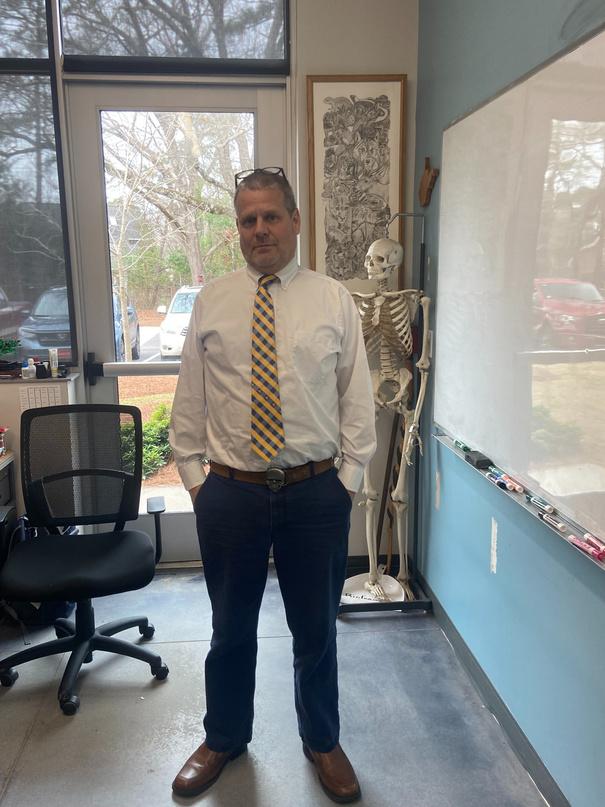
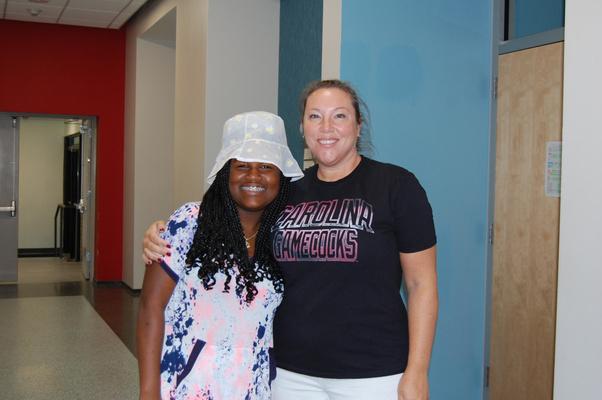
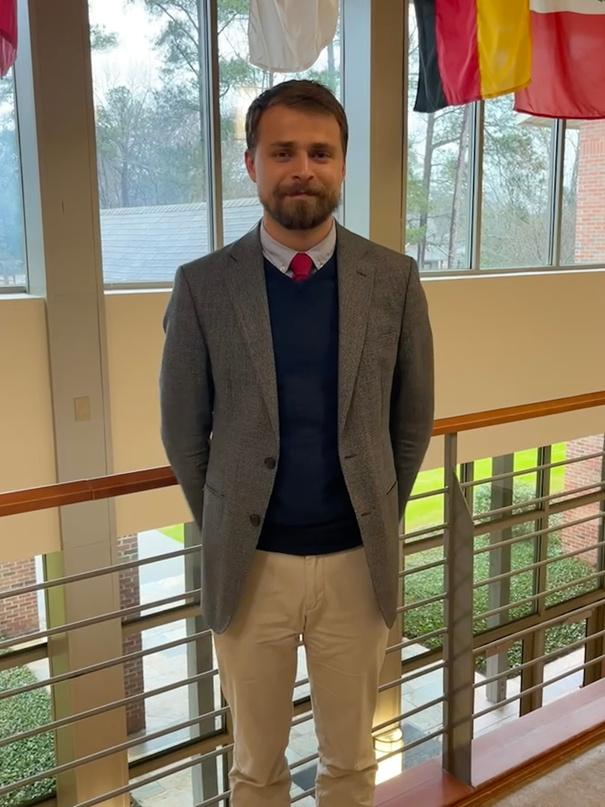
T H E S E N T I N E L / 1 7
UPPER: Mr Franke in his whimsical green bowtie MIDDLELEFT: Dr Dillard n her identifiable camisole and wrap dress MIDDLERIGHT: Mrs Jackson durng sprit week a contrast to her normal chic outfits LOWERLEFT: Mr McCormack in the infamous trench coat LOWERMIDDLE: Mr Rice in his everyday outfit topped off with his skull belt buckle LOWER RIGHT: Dr Million posing in his professional attire Photo credit to Hammond’s yearbook staff
The future of club collaboration for Dance Marathon
by Theodore Lumpkin
Recently, Hammond’s Dance Marathon raised 48,833 dollars for the children’s hospital, and Hammond’s other student organizations played a large role in making this remarkable feat possible.
Besides the efforts of the Dance Marathon organization itself in raising a large sum of money through donations, registration fees, and fees for same-day activities, one club that contributed greatly in funding the event was Bake A Difference. The group held a large bake sale specifically for Dance Marathon on February 10th, and the proceeds went to the Dance Marathon Donor Drive. According to club leader Ali Dorrington, the group has over 50 signed members and most of them consistently contribute to the bake sales, which have clearly proven to be an effective way of raising money for Dance Marathon while the club members enjoy creating baked goods and other concoctions and other students enjoy eating them.
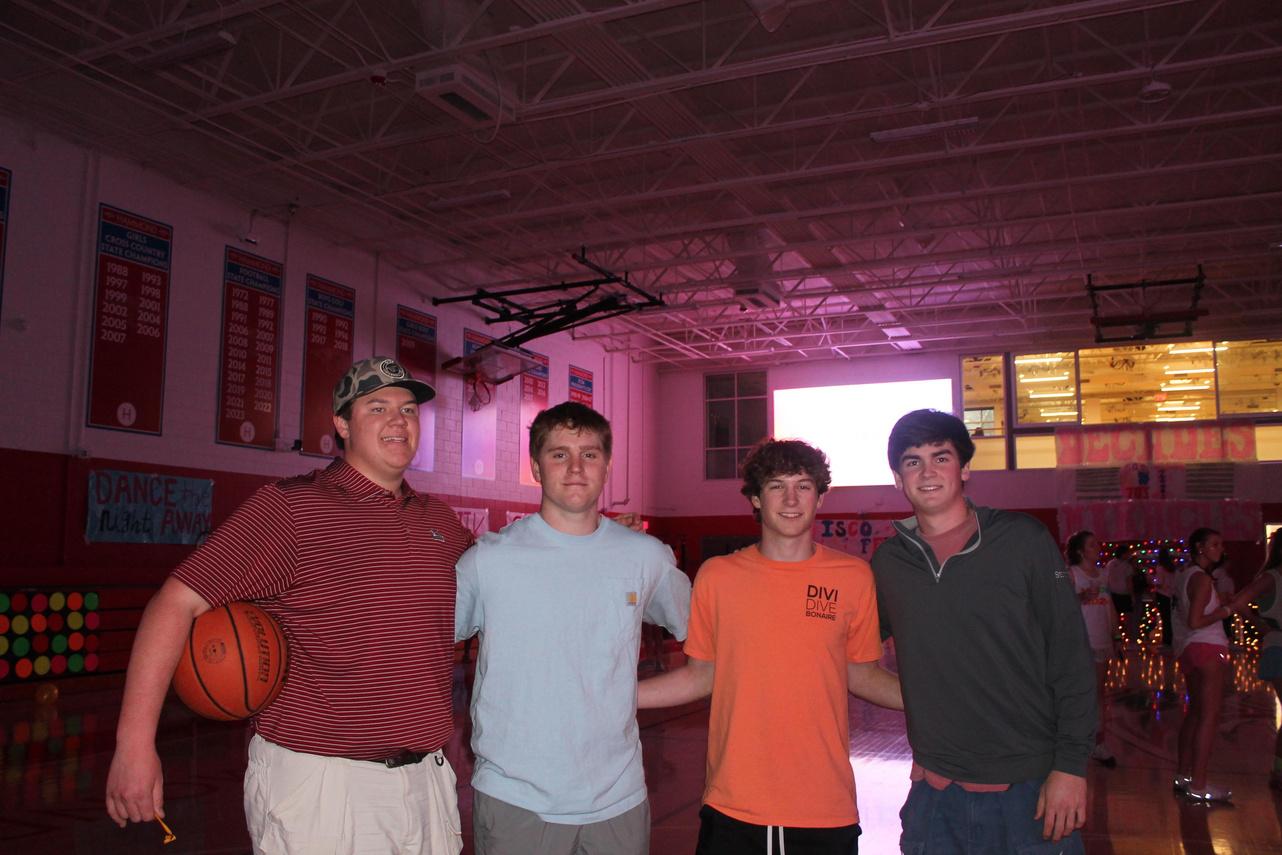
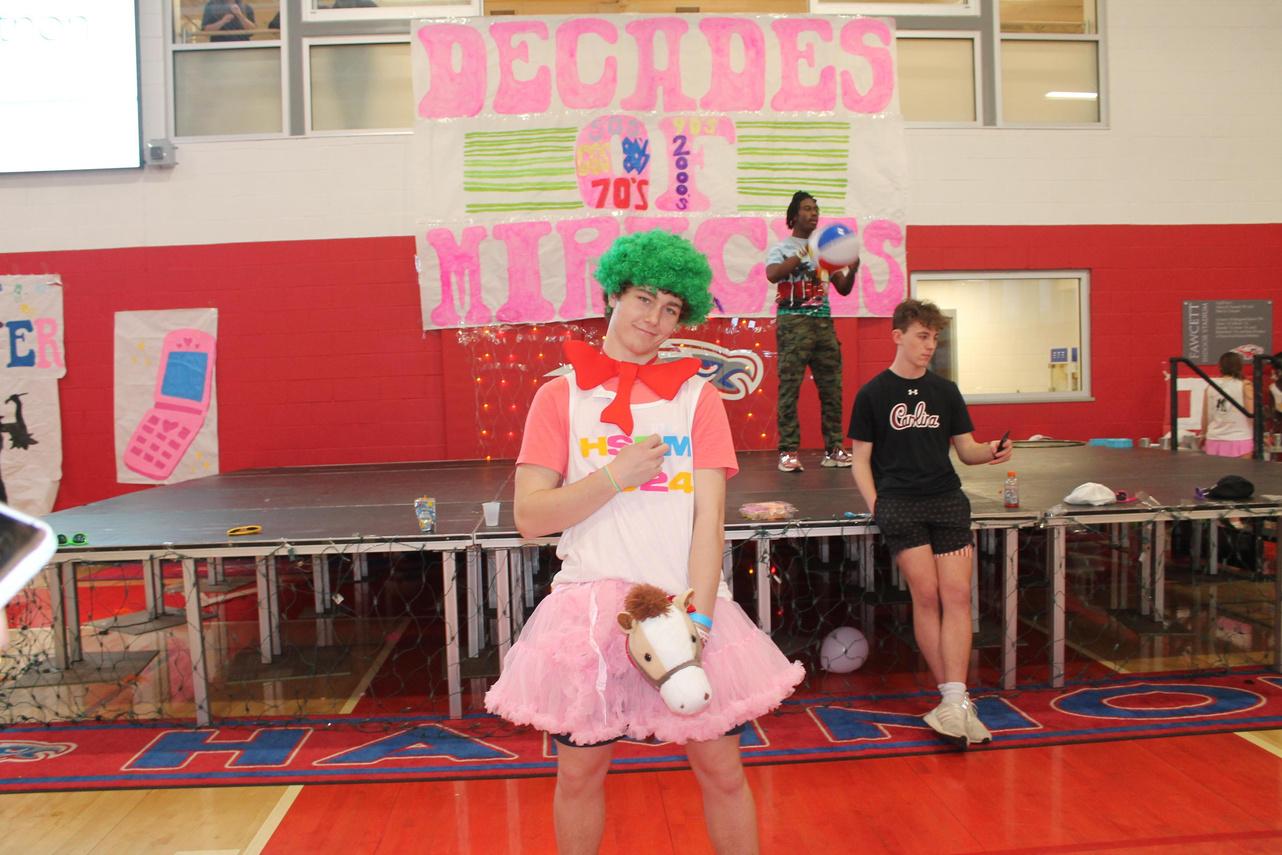
Another club that provided for the Dance Marathon event was Hammond’s new Barbecue Club, led by its faculty sponsor, physics teacher Mr. Henderson. Before the event happened, he described how the club had a few plans in store for the occasion, including cooking and selling ribs at the event. He also mentioned that a few students in the club would be “cleaning their freezers” out for extra meat to feed the Dance Marathon participants. Indeed, when the big day came, a noticeable throng of Barbecue Club members was right outside the gym near the parking lot, clustered around the grill. This has also shown to be a quite successful means of funding Dance Marathon while providing delicious food for the event.
T H E S E N T I N E L / 1 8
Barbecue club members Hampton Redd, Heath Jackson, Jack Fulda, and William Hudson at the Dance Marathon main event Photo credit to Hammond’s yearbook staff
Sophomore Ben Muela Kiser dressed up for the fashion show at Dance Marathon’s main event Photo credit to Hammond’s yearbook staff
Clubs have clearly been effective in helping promote Dance Marathon, but to truly maximize potential club funding for the event, clubs must start thinking outside the box for more creative solutions, implementing new ideas appropriate to our new batch of clubs this year

Chess Club founder and president Aspen Brooks suggests a Chess Club-organized chess tournament. This could resemble Hammond’s traditional springtime Cornhole Tournament, with a large bracket of student (and possibly faculty) participation and lunchtime matches. There could be a small fee to enter, and proceeds could go directly to Dance Marathon, with the possible exception of a small cash prize for the winner. Brooks was quick to acknowledge that this competition could quickly turn unfair if members of the club were allowed to participate; this same problem probably applies to faculty as well. Those individuals could still participate by refereeing matches and organizing the bracket.
Film Club could also hold a movie night to fund Dance Marathon, similar to the movie night this year whose proceeds funded Prom Committee. Once again, to incentivize widespread attendance a dress down

Outside the realm of clubs, sports teams could also help fund Dance Marathon. For example, a football game night could be Dance Marathon-themed and a percentage of the proceeds could go straight to Dance Marathon. This is an easy way to slightly modify a previously existing event while gaining a potentially large sum of money for Dance Marathon and also building excitement for the event with the e.
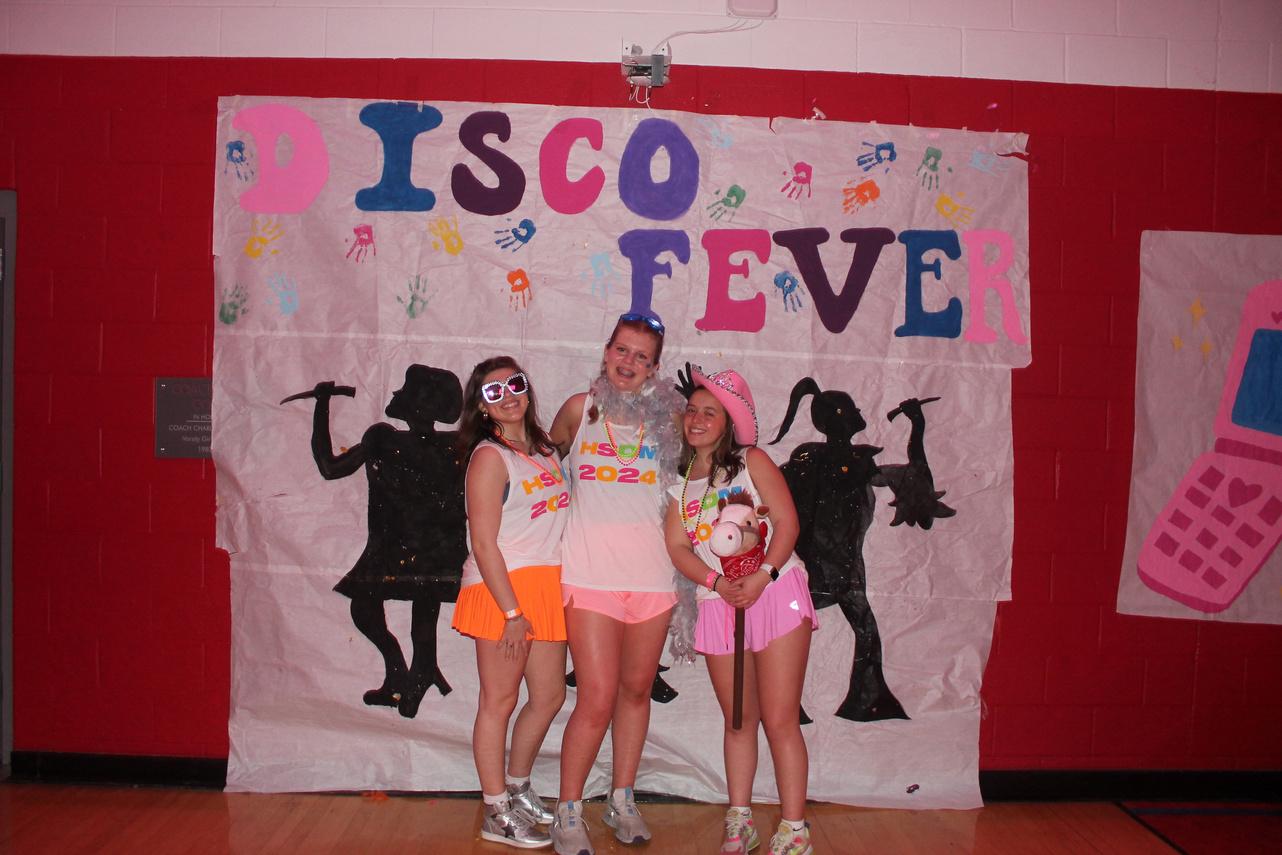
Club participation this year was important to Dance Marathon’s financial success. What can be done next year if we double the amount of clubs involved?
T H E S E N T I N E L / 1 9
Dance Marathon executives hold up the final fundraising total at the end of the event Photo credit to Hammond’s yearbook staff
Executives and other seniors pose together at the end of the event Photo credt to Hammond’s yearbook staff
Senior Rollins Reed, sophomore Madge Miller, and senior Lily Meetze pose together at the event
Photo credit to Hammond’s yearbook staff
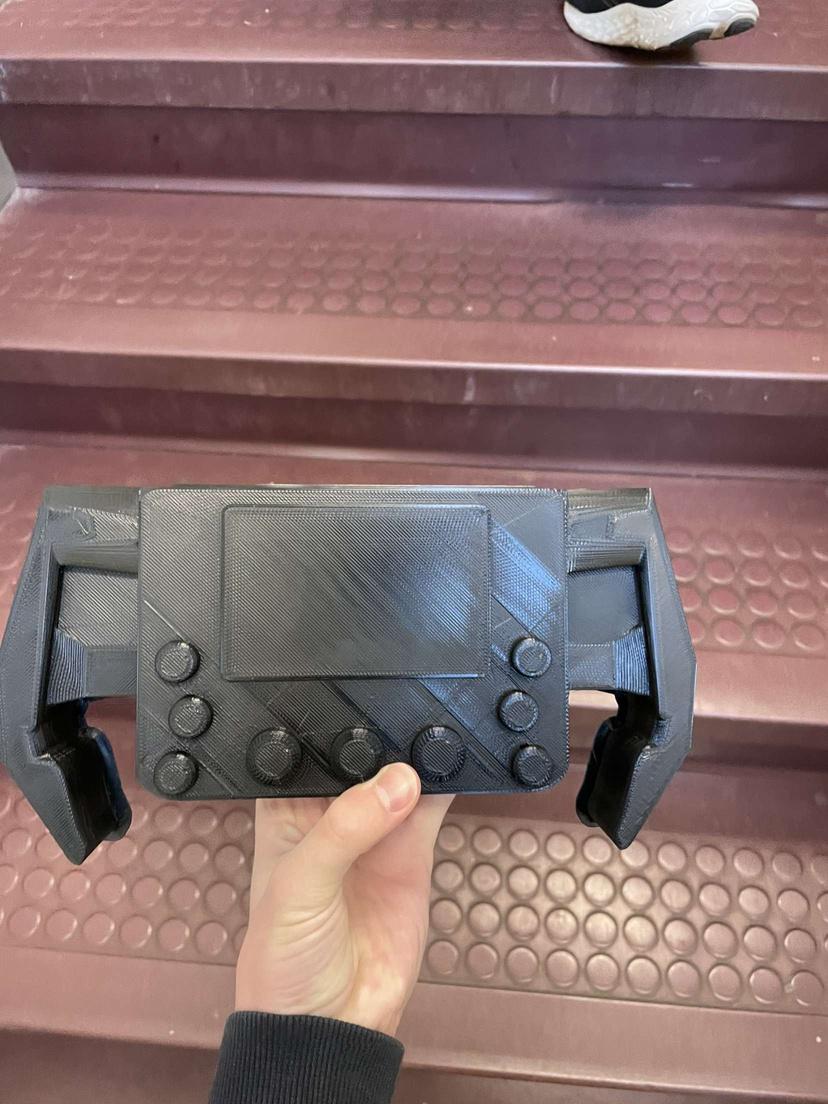
Design Club Works on go-kart
by Cole Glenn
Design Club has not existed at Hammond for a while. In 2019, they built a hoverboard out of a leaf blower, which Mr. Lutterbie still has. They were planning on improving it the next year, until Covid stopped that project from going through. Most members graduated before the club could return to normal. Now it’s back through the student leadership of junior Zamam Lone, who wanted to bring it back to “create a group where we could come together and build something.”. The current group consists of members from 9th to 11th grades who meet on Tuesdays in the Maker Space. Their current project is to build a go-kart, hoping to correct the failed effort to build one a few years ago. That project involved an old lawn mower engine that a group of students attempted to fashion a go kart out of, but it never really got off the ground.
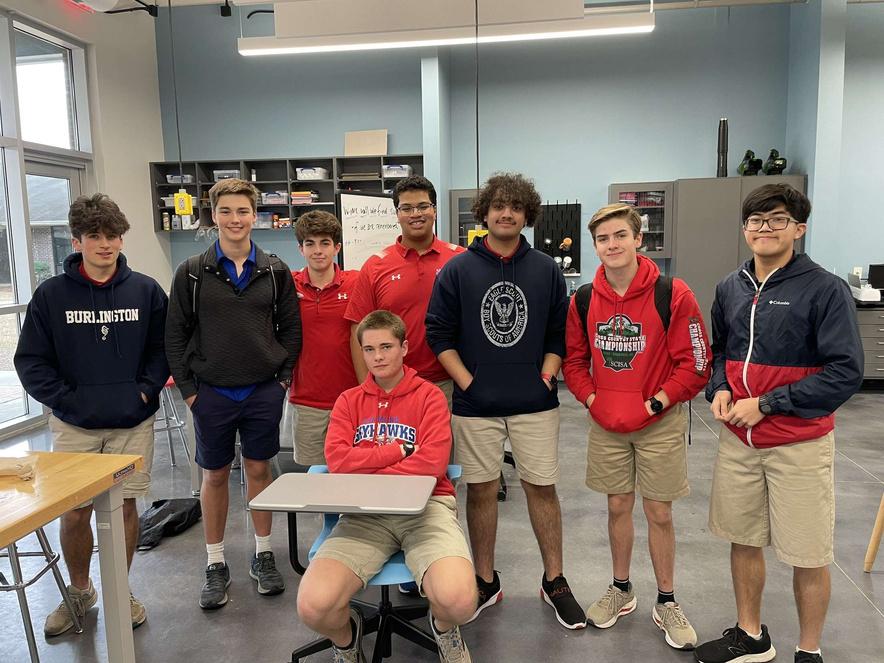
Now, the new design club has taken over and has decided to start from scratch. They are already well on their way to a go kart, with a steering wheel already modelled in Blender, a 3D modelling software, after an F1 steering wheel. They will build most of the car out of metal, which they will weld over the summer. The go kart will have 5 horsepower and will be 4x5 feet. However, this project will take around two years to complete. To keep excitement in the club going, they plan to do some smaller projects as the go kart is being developed.
A project they have in mind is a Blender competition. They will have a time limit to create a project in Blender and will then vote on the best designs. The club has members who are passionate about design, like Hayes Martin, who put it like this: “It feels like everybody is really a part of the process because even if you aren’t involved in the actual design, you are still involved with the sharing of ideas.”
T H E S E N T I N E L / 2 0
ABOVE: The modelled steering wheel BELOW: Design club members pose in the Maker Space Photo credit to Cole Glenn
looking back on 20 years of select ensemble
by Anika Gupta
“I love a challenge.” Those were the first words that choral director Steven Hillard said to me when asked how he transformed the high school choral program from virtually nothing to a thriving Select Ensemble of nearly 50 students which has been a vital part of Hammond life since its inception in 2003. Under the direction of Mr. Hillard, students have sung their way through the cathedrals, chapels, and churches of Europe.
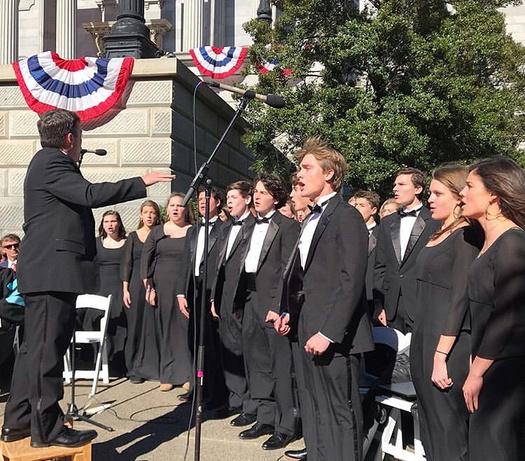
It all started in 2001 when Hillard was hired at Hammond. At that time, Hammond lacked an established choral program, compared to programs in other fine arts subjects like drama and studio art. In his first year at Hammond, Mr. Hillard primarily taught middle school chorus classes to build interest within the middle school as a stepping stone for a future high school choir. There was one upper school chorus class consisting of seven girls and one boy. Mr. Hillard remarked that his “main challenge was how I would bring excitement to a very new program that nobody knew about.” He recalled, “I can remember standing in one of the first upper school assemblies of the year and I was like, ‘Okay guys, I only have one guy and 7 girls, so chorus is the place to be if you want to meet your future girlfriend!’” Hillard got creative with the timings of his practices, putting them after football practices and during classes or free periods. He tried Monday evenings, which were open to both faculty and students, whether they had existing musical knowledge or not.

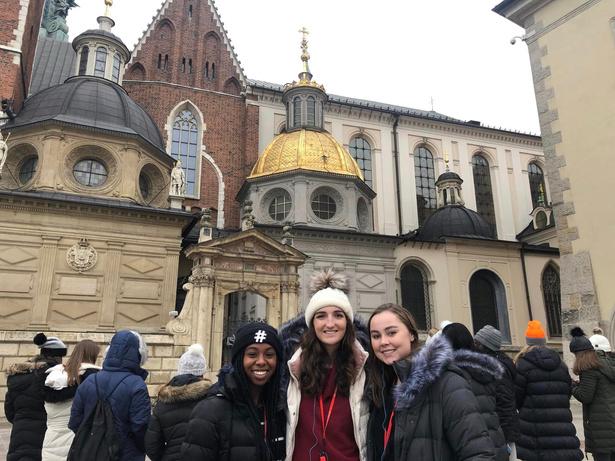
T H E S E N T I N E L / 2 1
“
ABOVE: Hillard directs the choir during the first inauguration of Gov Henry McMaster in 2019 MIDDLE: The choir prepares to sing the national anthem at a Columbia Fireflies game in 2018 BELOW: Then-choir members Brianca Beckford ‘19, Justice Myers ‘19, and Anna Grace Felber ‘19 during the 2018-19 tour of Poland and the Czech Republic Photo credit to Hammond School (Instagram, Hammond School)
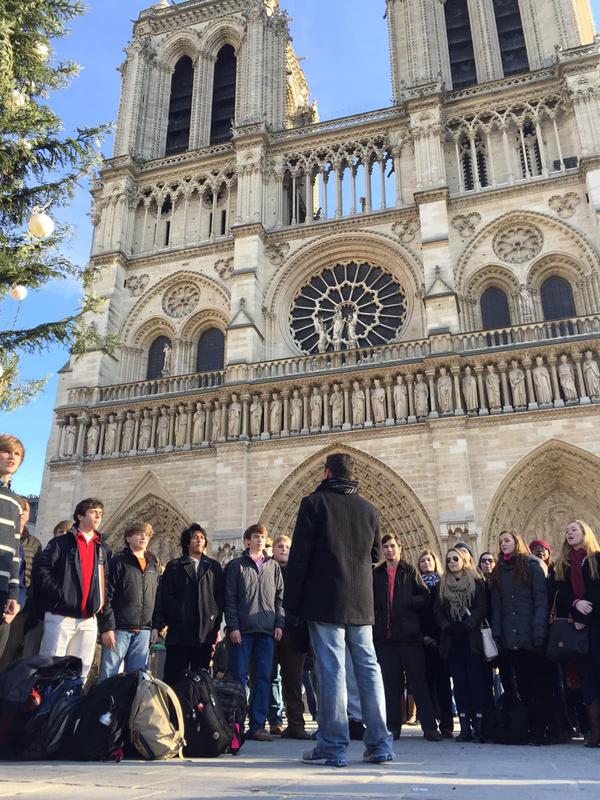
Gradually, the program gained interest and began to grow from 8 students to over 40 students and multiple faculty members. Mr. Hillard remembered how he began to, in his words, “advertise” the program by reminding students that they could be multiple things at once – both an athlete and a singer, or both a visual artist and a singer. He always pushed people “to get outside their comfort zones and try something new, even if they thought they would hate it.” As the class sizes grew larger, he decided to try something different, inspired by the group from the 2001-2002 school year who travelled to Washington, DC to sing with the National Philharmonic. Mr. Hillard put out the idea of an auditioned select singing group that would travel and sing throughout South Carolina (and, eventually, around the world). After some negotiation with Dr. Herb Barks, then the head of school, Mr. Hillard got the approval needed. In 2003, the Select Ensemble was born.
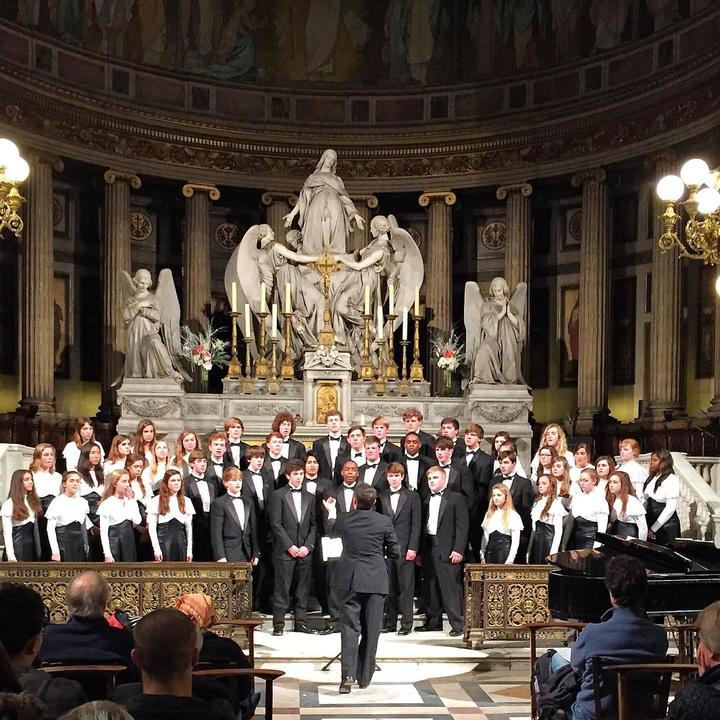

The school community responded well to the group, whose soulful voices were heard at events around Columbia. But Mr. Hillard was thinking bigger. When Dr. Barks suggested the idea of taking Select Ensemble on tour, Mr. Hillard jumped into planning; an entire concert tour of Austria for the Ensemble. Even so, his enthusiasm was not matched at the time; Mr. Hillard recollected how, when he dropped the Austria file onto Dr. Barks’ desk, Dr. Barks said, “Oh, good… we’ll file this away for later.” This idea was kept on the backburner for a while, until that year’s holiday concert at First Presbyterian Church in downtown Columbia. The community received the concert so positively that “it got the ball rolling again,” and Dr. Barks and Mr. Hillard began to make plans for the Austrian tour.
T H E S E N T I N E L / 2 2
ABOVE: The choir sings in front of the Basilica of Notre Dame during their 2014-15 tour of France MIDDLE: The choir sings at the Madeleine during the same tour LOWER: Then-choir members pose at the Eiffel Tower during the same tour Photo credits to Hammond School (Facebook, Hammond School)
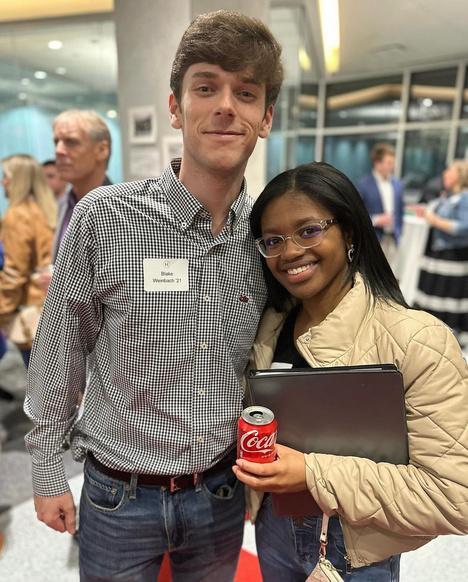

Since then, the Select Ensemble has traveled all over the world, singing in Italy, Poland, Germany, France, and Costa Rica as well as Austria. Hillard’s fondest memories of the Ensemble come from these trips.. He recalls when the group sung songs of peace in freezing temperatures at Auschwitz and Dachau, former Nazi concentration camps. Mr. Hillard also remembers how one of his tour groups stopped in the middle of Esterházy Palace in Austria, and, instead of touring the area, had a full-blown snowball fight in the common square between the castle towers. He sees these tours as impactful on him and his students; in a past Italy tour, after performing their last concert in the Pantheon, Mr. Hillard found his students crying unconsolably afterwards. They were devastated to have finished their last concert during this tour, and for many, their last international concert with Select Ensemble.
When asked about the future of the Ensemble, Mr. Hillard immediately replied, “I can’t wait… if you had asked me 20 years ago where I thought Select Ensemble was going, I would have told you to come back in 20 years because I had no clue.” He added, though, “ As I see my current singers with my past singers all performing together, I can’t help but wait for the 25th anniversary, and the 30th, and the 40th, and heck, even the 50th.” He concludes with his gratitude for the group and for Hammond, saying, “Most of all, I can’t wait to spend my life with the students that mean so much to me."
T H E S E N T I N E L / 2 3
LEFT: Alumni Blake Weinbach ‘21 and Kaycee Tompkins ‘23 at the 20th anniversary concert and reception, held in the Innovation Center on the evening of January 27 RIGHT: Alto alumnae pose for a picture at the reception Photo credits to Hammond School (Facebook, Hammond School)
Restaurant Review:
MOA Korean BBQ & Bar
by John Cuda
When thinking about what restaurant I could review, I recalled how I had heard from a friend that Korean barbecue offered a unique dining experience, and that MOA was a great place for it. After arriving at their location on 1333 Main Street, I entered a lush and modern restaurant with lots of plant-like decor. The waitstaff were friendly and attentive, even during the lunch rush. A popular dish is the Mandoo dumplings; my waiter claimed that everyone who orders them likes them. Indeed, I was not disappointed. They had a rich and authentic flavor, served with the best soy sauce that I have ever tasted.


For the entrée, I was enticed by one of their Korean BBQ combos. Though they are quite expensive, starting at $90, I got my money’s worth. The table’s strange and bulky layout, which I noticed when I sat down, made sense when the waiter revealed the grill inside the table, which exists since Korean barbecue is cooked by the patrons They wheeled out a whopping 5 sides, soup, rice, and finally, the beef and chicken that we were to cook. It was hard adjusting to the experience at first, but the meat was rich and delicious. It ended up being a very large meal, so if you plan on coming here, bring friends. Furthermore, if you have no idea how to use chopsticks, ask for a fork and knife; trust me. All in all, this was the most unique dining experience that I have ever had. I rate it five stars.
jackson Muschamp ’20 secures the Orange Bowl
by Cole Glenn

Jackson Muschamp graduated from Hammond in 2020 and walked on to the University of Georgia to play quarterback. During his Hammond career, he played backup for Corbett Glick during the 2017 season and started the 2018 season, leading us to a state championship. He passed for 3,062 yards with a 67% completion percentage and 34 touchdowns, winning 2018 SCISA offensive player of the year.
He committed to Georgia and has been a part of the team for the past 4 four seasons. He finally went into a game this past winter during the Orange Bowl during the fourth quarter. The game was already in hand, but Jackson ran for a first down to seal the game for the Bulldogs His dad, who is a defensive analyst for the Bulldogs, was able to celebrate his son’s success from the sidelines. Jackson graduates from Georgia this year, having spent four years winning two national championships, almost as many as he won at Hammond.
T H E S E N T I N E L / 2 4
Muschamp during the Orange Bowl. Photo credit to Bulldawg Illustrated
A photo of MOA’s Main Street entrance Photo credit to The State
To the next level: Spotlight on Samira Khalil
by Isabella Aguilar Peña
As a dedicated and hardworking student athlete, Samira Khalil works tirelessly both on the court and in the classroom. This tenacity and dedication have proven to pay off as she closes out her high school experience at Hammond and looks toward the future.
One of Samira’s accomplishments is being nominated as a McDonald’s All American. Samira explains that this program “seeks to recognize some of the best senior basketballplayers across the country. Later, a committee selects the best 24 players from the list of nominations who will play in the McDonald's AllAmerican game later this year.” Samira elaborates that she “was only nominated, not selected for the game, it is a great recognition because it highlights my abilities as a basketball player.”


Outside basketball, Samira enjoys multiple sports and supporting her friends by attending their games. Samira is also a focused and steadfast student Samira reflects on how Mr. Rybarczyk’s honors pre-calculus class had the most impact on her. Samira explains that “his class was very challenging for me, and it really taught me how to persevere and continue to work hard when things are very difficult. Mr. R always encouraged me and helped me whenever I needed The hard work and determination that I learned from his class I have been able to apply to all aspectsof my life.”
As Samira prepares to move on to the next chapter in her life, she commented that the best advice she could give to a Hammond student is, “stay positive, even when things are difficult or not going your way. More than likely there is probably someone on your team that looks up to you and will follow your lead, so it is importantto stay positive, composed, and poised to lead your teammates in the right direction ”
Samira plans to study sports management at Elon for the next four years and hopes to become a basketball coach after her playing career is done.
Samira’s great athletic talent was recognized when she was offered to play Division One basketball at Elon University next year. Samira describes her signing day as a “very special and emotional day for me and my family because I have spent so many years working towards playing college basketball.” Having passion, along with dedication, for a sport is something that is invaluable for an athlete, and Samira has both.
T H E S E N T I N E L / 2 5
Khalil and senior Lauren Vincent during this year’s game against Ben Lippen Photo credit to Hammond’s yearbook staff.
A collage of Khalil during her 1000-point recognition in 2023 and in her Elon uniform Photo credit to Sentinel designer Zac Schneider.
More than a textbook: faculty publishing books
by Drew McCall
Every Hammond student is assigned textbooks and novels by their teachers, but many have also been assigned work written by their teachers. Hammond faculty who have written a book or are publishing a book is an expansive company, including teachers and staff across divisions and subjects.
Feathers
By Jim Lalumondier
Mr. Lalumondier most recently completed his book in early January. This was a long process, as Mr. Lalumondier said, as he “would write, put it aside for a few years, rewrite, start over, then rewrite ” All in all, the process took 25 years Mr Lalumondier is very proud of his book, as well as very humbled by the Hammond community that was a part of his writing process and the current students who read, enjoy, and bring the book to him to be signed.
Mr. Lalumondier has taught at Hammond for that same duration, seeing and guiding thousands of students in the Lower School; in writing a book, he said, “My goal was simply to create something my students can read.” He added, “This is my first book to be published, and I do have an idea for a sequel, but I’m not in a rush to write to too soon. As an artist, I see this creation as being just another one of my art pieces.”
His book is entitled Feathers: A Boy’s Adventure through Grief to the Rainforest. Mr. Lalumondier went into detail about his book, meant for readers ages 10 to 14, telling me that “it is about a child whose father has passed away, and while going through that, he discovers a rare Amazonian bird living in his stomach ” However, Mr Lalumondier relays a larger message, saying that “the process of getting that bird back to the Amazon is a metaphor for his grieving process ”
THE Bible in brief
By Caryn crabb
Another notable Hammond faculty publication is freshman English teacher Caryn Crabb’s “The Bible in Brief.” When Ms. Crabb started teaching at Hammond, administrators told her that an overview of the Bible was a part of the curriculum in 9th grade English. However, Hammond is not a religious school, so, as she said, “we didn’t want to make everyone buy a Bible.” She continued, “So I was given a Bible textbook to use. It was a college textbook, and although I liked it for myself, I hated it as a resource for 9th graders!”
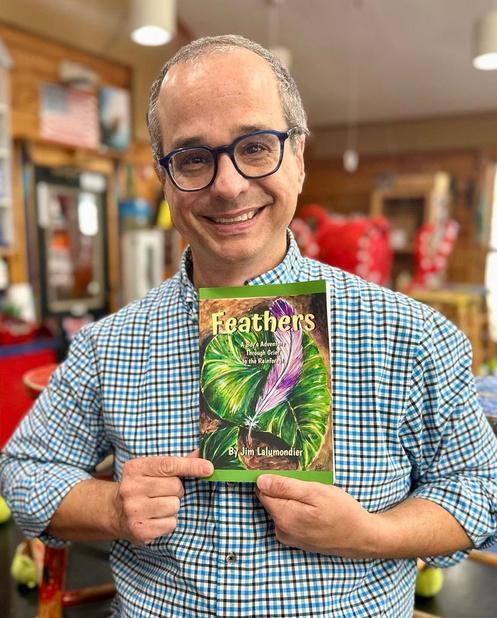
The story in Mr. Lalumondier’s book is inspired by his personal life, as well as members of the Hammond community like naturalist-in-residence Tom Mancke. “Every character has a little bit of me in them,” he commented. “My older brother passed away a few years ago, so I know too well what the grieving process is like.”
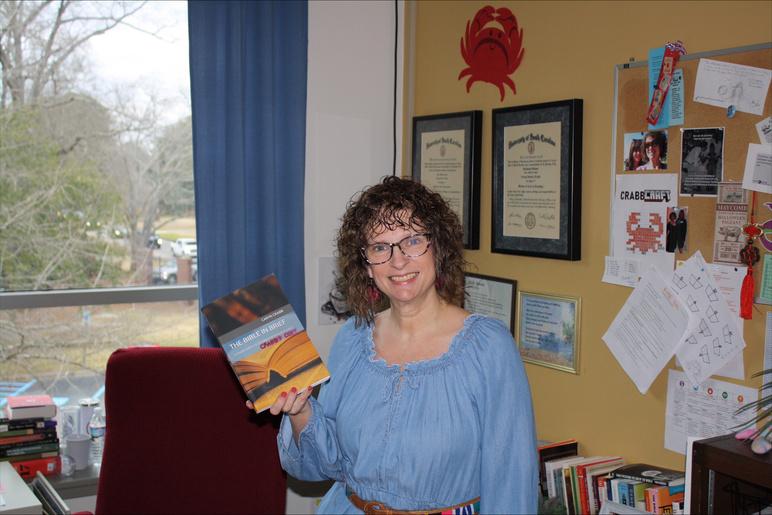
T H E S E N T I N E L / 2 6
Lalumondier with his book Photo credit to Hammond School (Instagram, @hammondschool)
Crabb with her book Photo credit to Sentinel photographer Baylis Wang
In her search for a new textbook, Ms. Crabb had little luck finding a book well-suited for her ninth-grade curriculum, “so I decided I could write one myself.” Ms. Crabb’s Bible textbook did not take its current overnight though; she said, “It took a few years to complete the first one, and then I continued to tinker with it for another few years until I ended up with the shorter version, The Bible in Brief.” This textbook has been a tool for Hammond students ever since as they learn about the Bible throughout freshman year. Ms. Crabb says that it is still a work in progress, saying, “I am constantly making notes about how to clarify and improve it.”
Atonly120pagesofactualBiblicaltext,TheBiblein Briefisdesignedforclassroomstudieslastingfromone monthtoonesemester.TheBiblehasover1,100 chapters,whereasTheBibleinBriefincludesabout70.
Crabb’sdescriptionofTheBibleinBrief
Ms. Crabb’s textbook is self-published on Amazon, following years of learning the ropes of “technological and formatting work that has to happen… page design… cover art… [and] not to mention business-end stuff.” Writing the book, Ms. Crabb says, “It’s a headache sometimes, but in the long run, very rewarding.”
The Most Unconquerable King: Chivalric Kingship in Angevin Naples, c. 1226-1382
By Jacob Million
Sophomore history teacher Jacob Million is currently 8 years into what he projects to be a near 15-year project, a book called The Most Unconquerable King: Chivalric Kingship in Angevin Naples, c. 1226-1382. The origins for this book stem far beneath Dr. Million’s studies at Rochester or Indiana. Dr. Million asked, “What little kid does not love stories about or toy models of knights and dragons?”
Dr. Million added, “I do not think that childhood joy… can fully explain my willingness to put myself through the hardships of a graduate program, though. My book was only finished because of the support and guidance of close mentors ” These mentors not only helped Dr Million throughout his writing journey, but provided support throughout his college education, particularly after a 3-hour Latin exam that “may or may not have gotten the better of me.”
Dr. Million’s inspiration for writing continues to challenge him He detailed a recent conversation with an academic advisor of his, which left him with this takeaway: “Reading is worth it, and we can only read if some people write. That is motivation and inspiration enough at 5 AM with pen in hand.”
For the book itself, Dr. Million says he “set out to reveal the political ramifications of a simple reality of the late Middle Ages: kings were expected to be knights.” His work follows evidence and accounts from 13th and 14th century letters, court cases, chronicles, political philosophy, and imaginative literature. It discusses the internal battle faced by kings of the time, where “generations of monarchs had to reconcile the knightly desire to protect and vindicate private honor with the royal need to secure public peace.” Dr. Million says that he is eager to share details of his writing journey as it progresses.
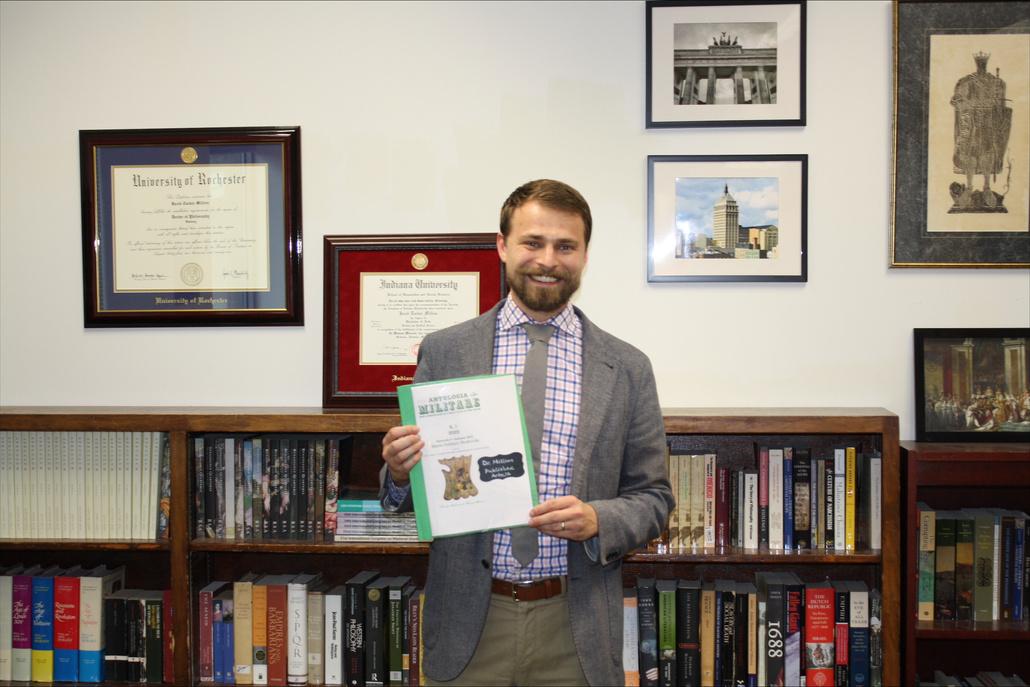
T H E S E N T I N E L / 2 7
Million with a previously published journal article Photo credit to Sentinel photographer Baylis Wang
Back in the training room: Spotlight on Brianca Beckford ‘19
by Isabella Aguilar Peña
Brianca Beckford graduated from Hammond in 2019 and has come back to campus this year; many may have seen her around campus during the school day or down on the track coaching the runners.
Brianca ran track and field and played tennis while she was a student at Hammond, with high levels of athletic dedication. Brianca reflects that her favorite classes at Hammond were chemistry and French and favorite teachers were Mr. McCormack, Mr. Lutterbie, and Mr. Hillard. Brianca also comments on how Hammond helped her grow as a person overall. Brianca explains, “Hammond allowed me to get out of my comfort zone in all areas of my life. I was challenged as a student and a person I can confidently say that if I didn't go here, I would never have done things like sing on the streets of Poland or live with a host family in the small town of Tres Equis in Costa Rica.”

After Hammond, Brianca attended Furman University, majoring in health sciences, and participated in club and intermural sports for fun.
Brianca got the opportunity to return to Hammond through a conversation with director of choirs and student activities Steven Hillard. Brianca was talking to him about what her career plans and how she was contemplating taking a gap year. Mr. Hillard then suggested she look into a teaching fellows’ position here at Hammond, which is how she is working at Hammond now along with being a coach. Brianca remarks about Hillard, “I am grateful that he continues to look out for me even after graduating.”

Brianca says she is enjoying her time here at Hammond and that she especially loves coaching the runners for track and field She comments that, “It was a shift for the runners and me. As I said before, I ran here, so being on the other side is different, but I think I have developed some trust amongst the runners…I think it'll be a good season for everyone.” Brianca will only be on Hammond’s campus for the rest of this school year However, after her time at Hammond is done, she will attend Duke University to earn a Doctor of Physical Therapy degree in August, and she says she will “100% be back for graduation.”
Beckford, left, with middle school French teacher Bonnie Henneman and lower school teacher Mya Troyer ‘18 during the new faculty reception in August Photo credit to Hammond School (Instagram, @hammondschool)
Beckford following her graduation from Furman University
T H E S E N T I N E L / 2 8
Photo credit to Brianca Beckford (Instagram, @briancab123)
Hammond seniors celebrate early decision acceptances
by Adelaide Helmboldt
As the end of this coming year draws near, many Hammond seniors are anxious to decide what school they will be attending in the fall. Contrastingly, a handful of students in Hammond’s 2024 graduating class felt passionate enough about a school to Early Decision Although the decision to apply ED can be daunting, many students view this as an opportunity to commit fully to a school they are passionate about by late November of their senior year. Early Decision is a broad term that encompasses many aspects of the college application process. First, Early Decision is considered a legally binding agreement between the student and the college; if a student is admitted, they have a legal obligation to attend that institution. While ED is considered legally binding, at most colleges, the student’s agreement to attend the college applies only if theyare offered a financial aid package that the family considers adequate. ED allows a student to commit to a school they love, without the weight of financial stress weighing over them.
There are pros and cons to both the Early Decision and Regular Decision admission processes. As a student, you are only allowed to apply Early Decision to one school (unless a school offers an Early Decision II round). This eliminates competition for the university and the student. Providing the option to Early Decision, colleges and universities are guaranteed a percentage of passionate students that are serious about attending their school. Additionally, being able to apply Early Decision can increase a student’s chance of admittance to a particular school. Furthermore, an anxious senior can gain confidence in finding a college that matches their academic, social, and geographical interests, reducing stress and the time waiting to hear back regarding their acceptance They can also save money by applying to fewer schools and can have more time to establish housing or roommates.
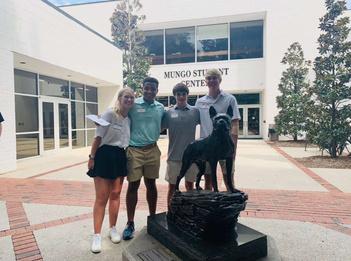

If not accepted, the student has ample opportunity to reassess options and apply elsewhere ED induces often undue pressure to decide where to attend college Its early-commitment nature also reduces options for financial aid opportunities. And ED usually means that studentsmeet or exceed the school’s expectations for test scores and academics. Regardless of those cons, many Hammond students find that the pros outweigh the cons, deciding to apply ED to a school they love. Before deciding to apply ED, Hammond students must have an important conversation with their parents and college counselor to determine the student’s financial aid situation and whether the student is fully committed to attending the college or university in the fall.
In the class of 2024, several Hammond students decided to apply ED at various schools, with many of them accepted. William Grantland was accepted ED to the University of Pennsylvania, Hannah Grace Carrington to the College of Charleston, Sadie Meacham to Sewanee, Victoria Lembo to Elon University, and Lilly Hensley to Washington and Lee University. In addition to the previous list, many Hammond students were accepted ED to a Hammond favorite, Wofford College. These students include Kacy Kraemer, Robert Malanuk, Coleman Marr, Edwin Miller, and Zachary Schneider Kacy saysthat “Wofford stood out for so many reasons. It was a small school that still had things I liked about big schools.” Kacy additionally states that Wofford“had great options” for her preferred major. Speaking to that unfathomable feeling, she says, “When it came to time to apply, Wofford was so clearly my number one, it was an easy decision.” Kacy’s personal experience provides some insight into the ED process Clearly, Kacy was passionate about what Wofford had to offer, and was eager to commit to a school with preferred class size, campus feel, and more Kacy had to exploreWofford before fully committing, but once she did her due diligence, falling in love with the schoolconvinced herto apply Early Decision.
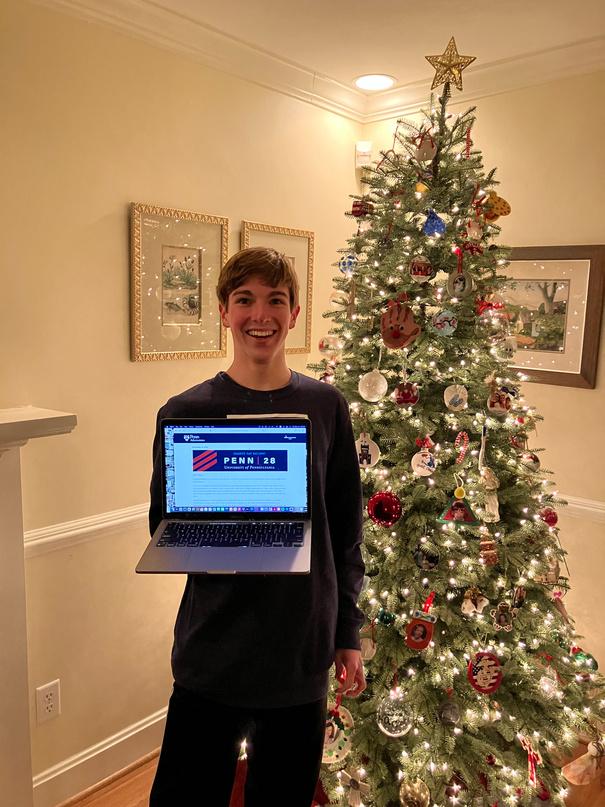
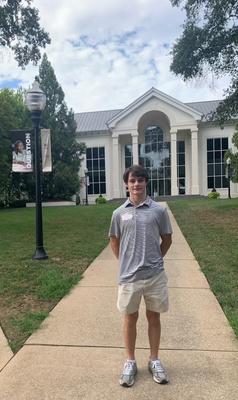
FARLEFT: Kraemer, Ryan Barnes, Schneider, and Miler vsiting Wofford Photo credit to Kacy Kraemer CENTERLEFT: Meacham wth her famly on her singing day to play softbal at Sewanee Photo credit to Hammond School (Instagram @hammondschoo) CENTERRIGHT: Grantland with hs acceptance letter folowing hs acceptance to Penn Photo credt to Willam Grantand FARRIGHT: Schneider visitng Wofford’s campus Photo credit to Zac Schneder T H E S E N T I N E L / 2 9
WILLIAM
NATALiE
LAUREN
CARYN
EDITORIAL STAFF
WINTER 2024
GRANTLAND Editor-in-Chief
ENGH Associate Editor
ASBILL Graphics and Digital Editor
HENSLEY Graphics and Digital Associate
AZPÚRUA-BORRÁS
LILLY
SANTIAGO
CRABB Faculty Sponsors THE SENTINEL THE STUDENT MAGAZINE OF HAMMOND SCHOOL WiNTER 2024, EDITION iV

























 by Ali Dorrington
by Ali Dorrington
















































